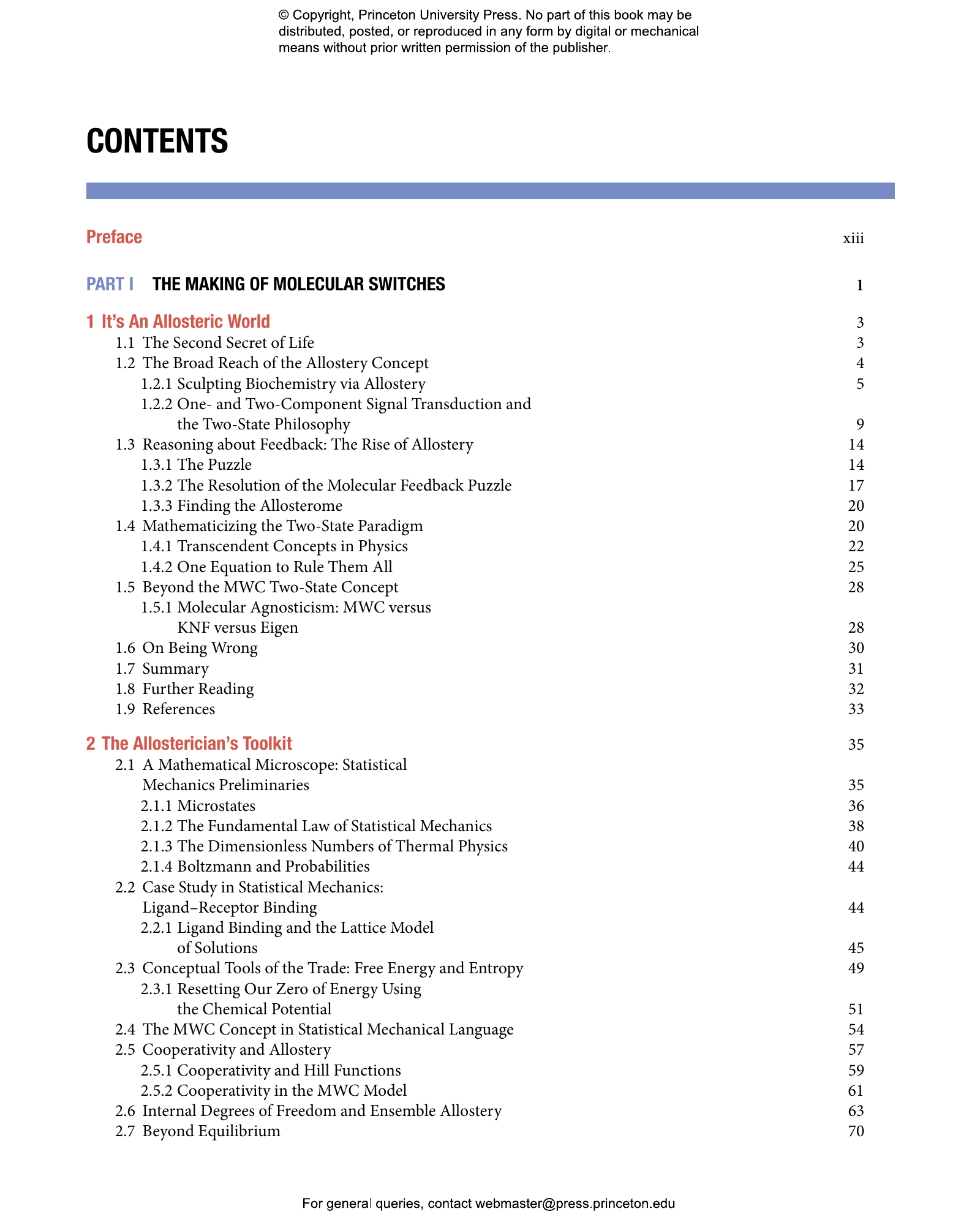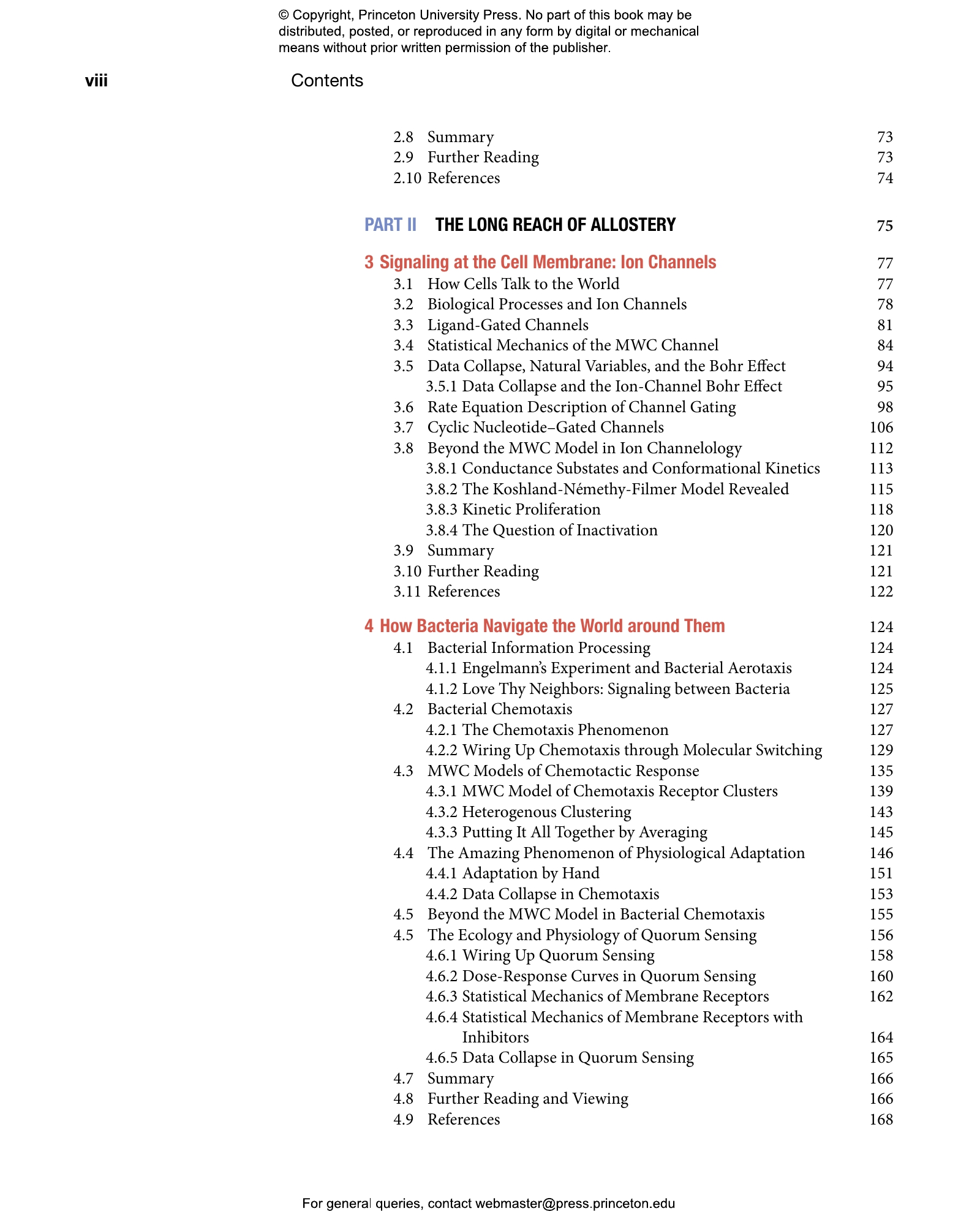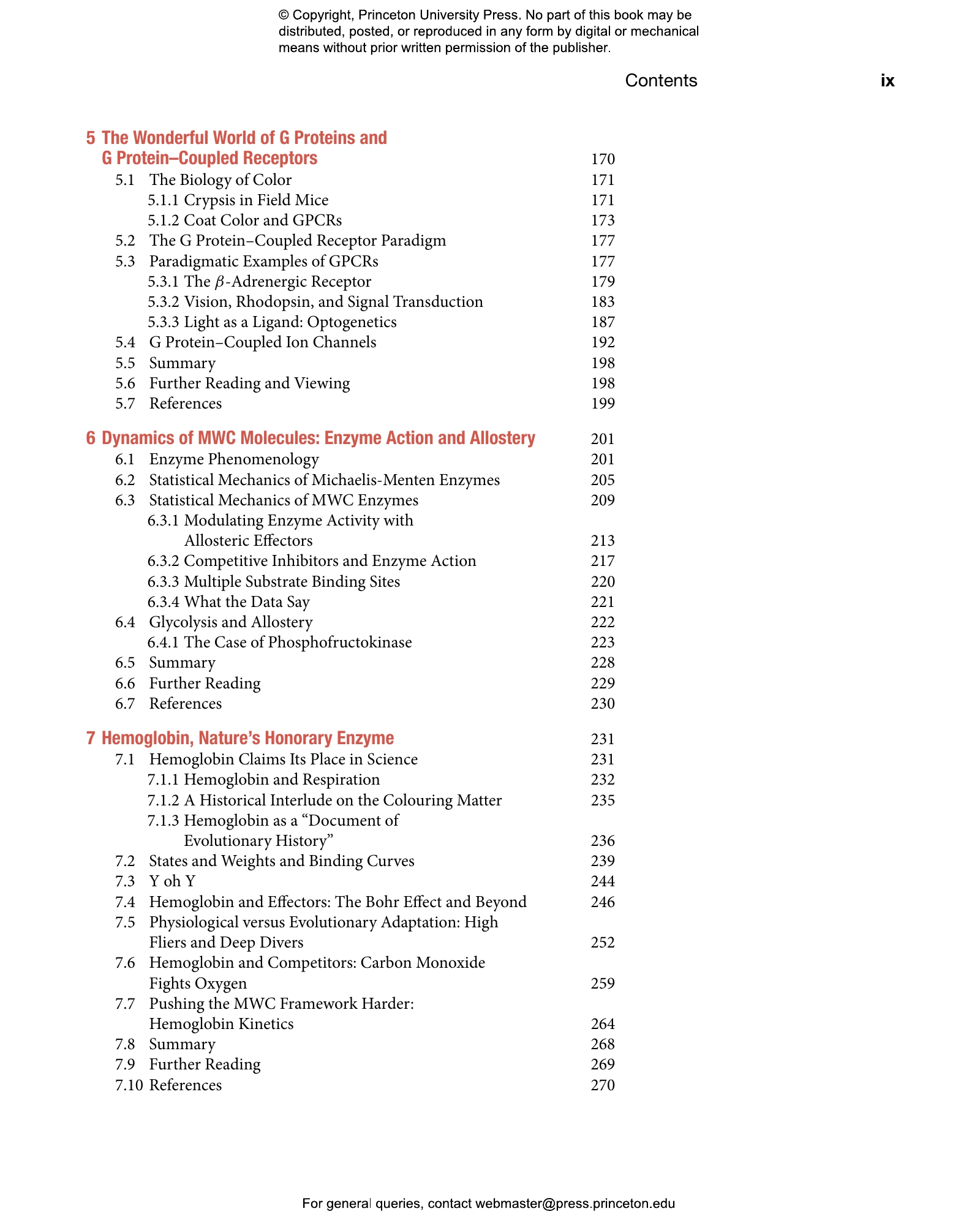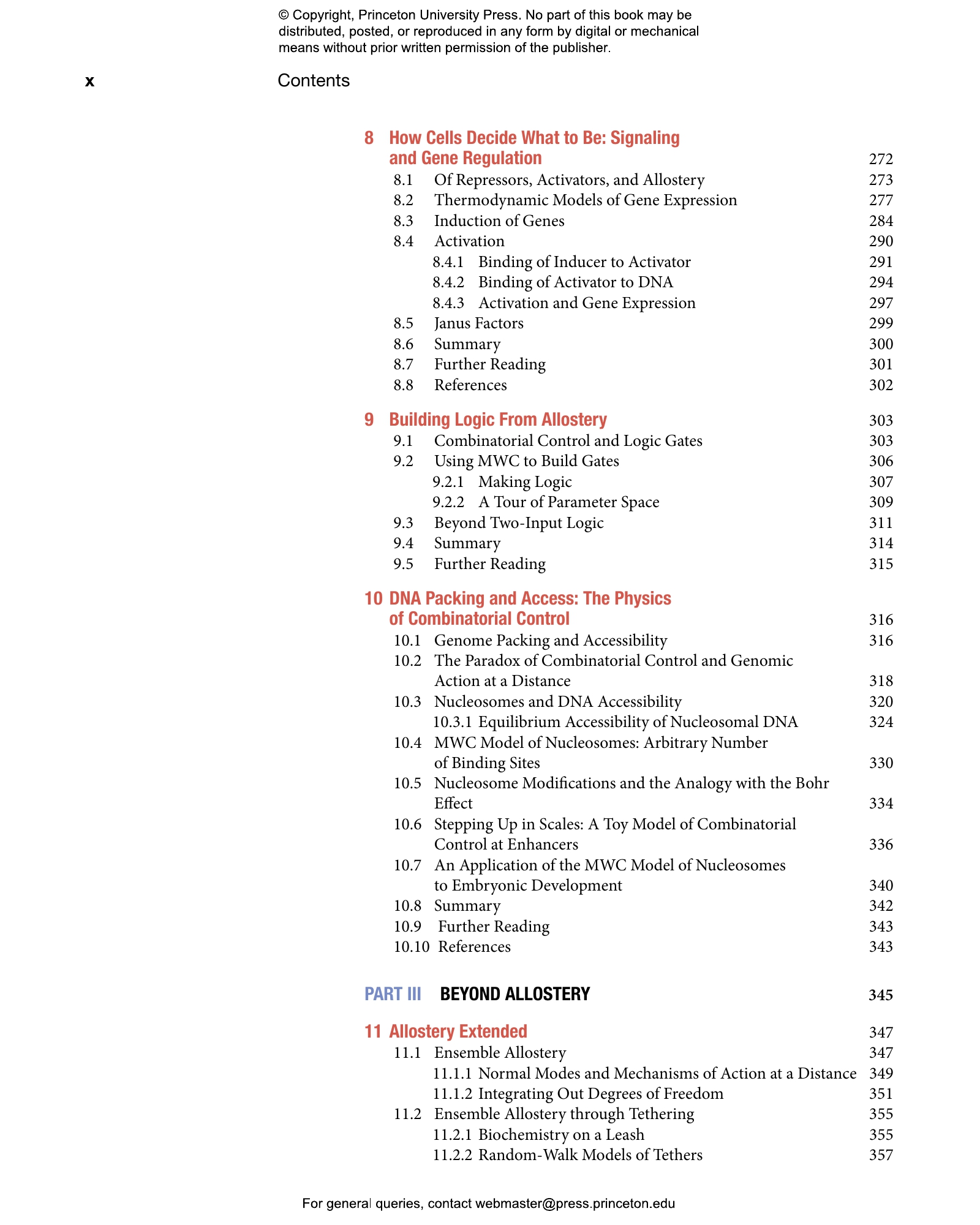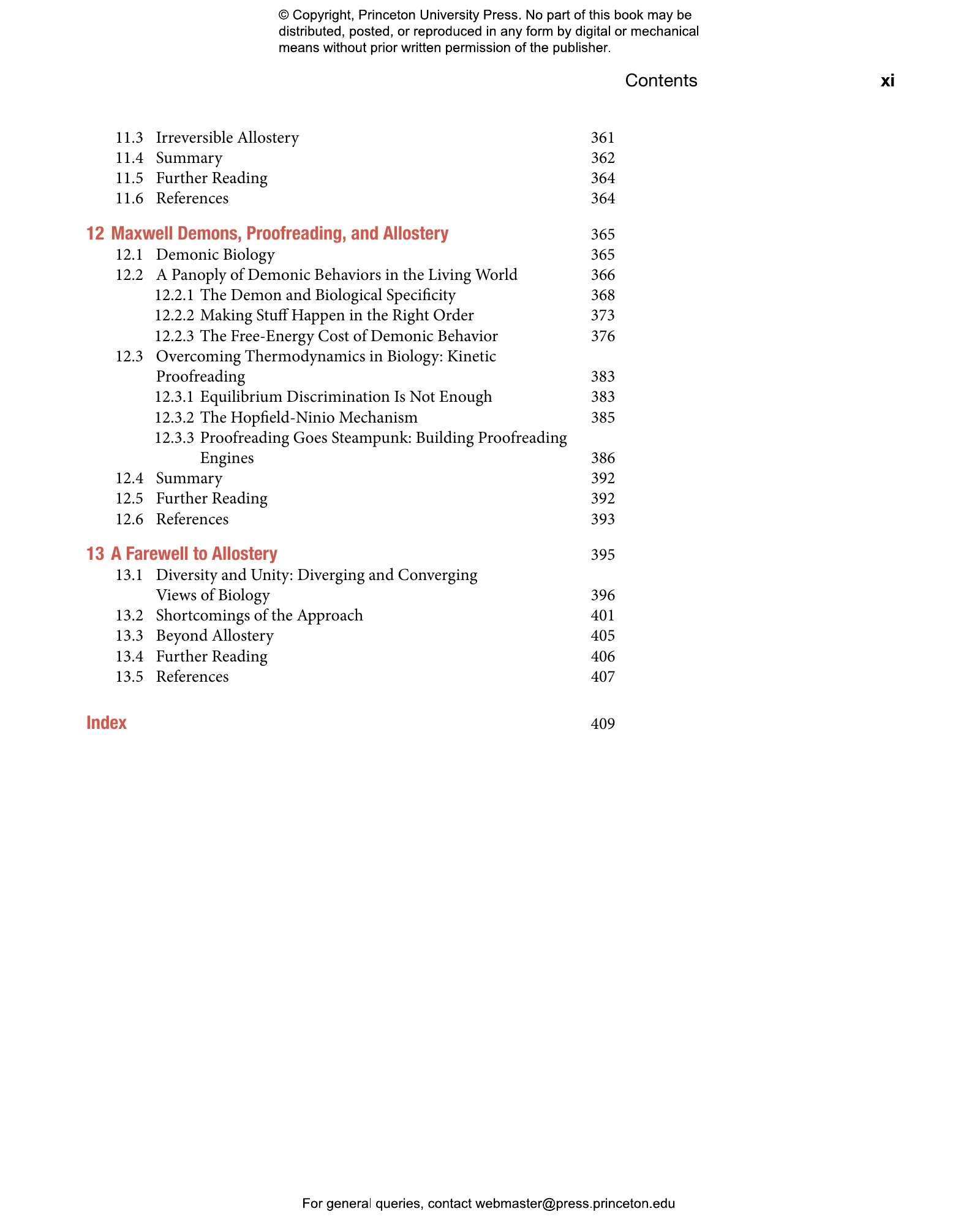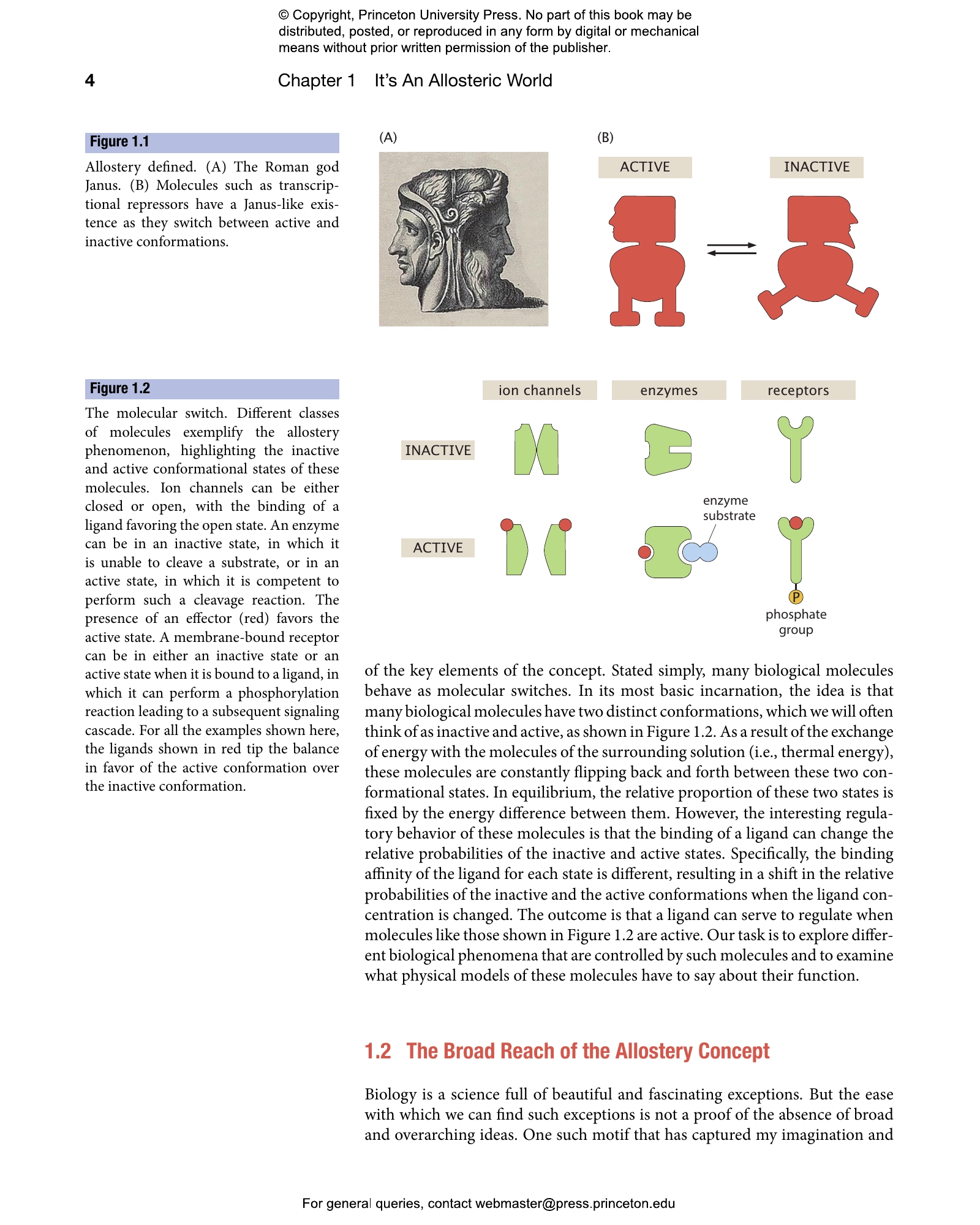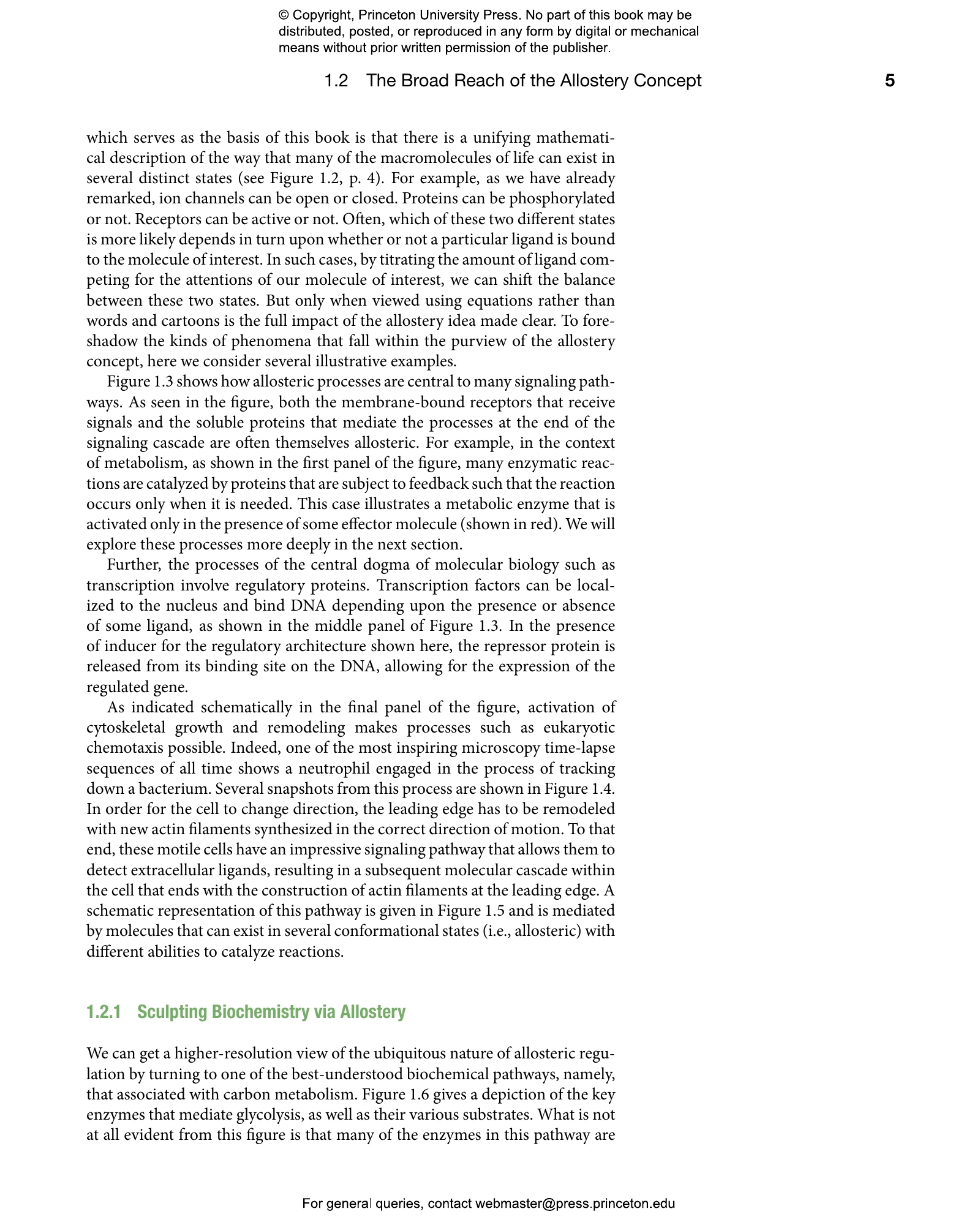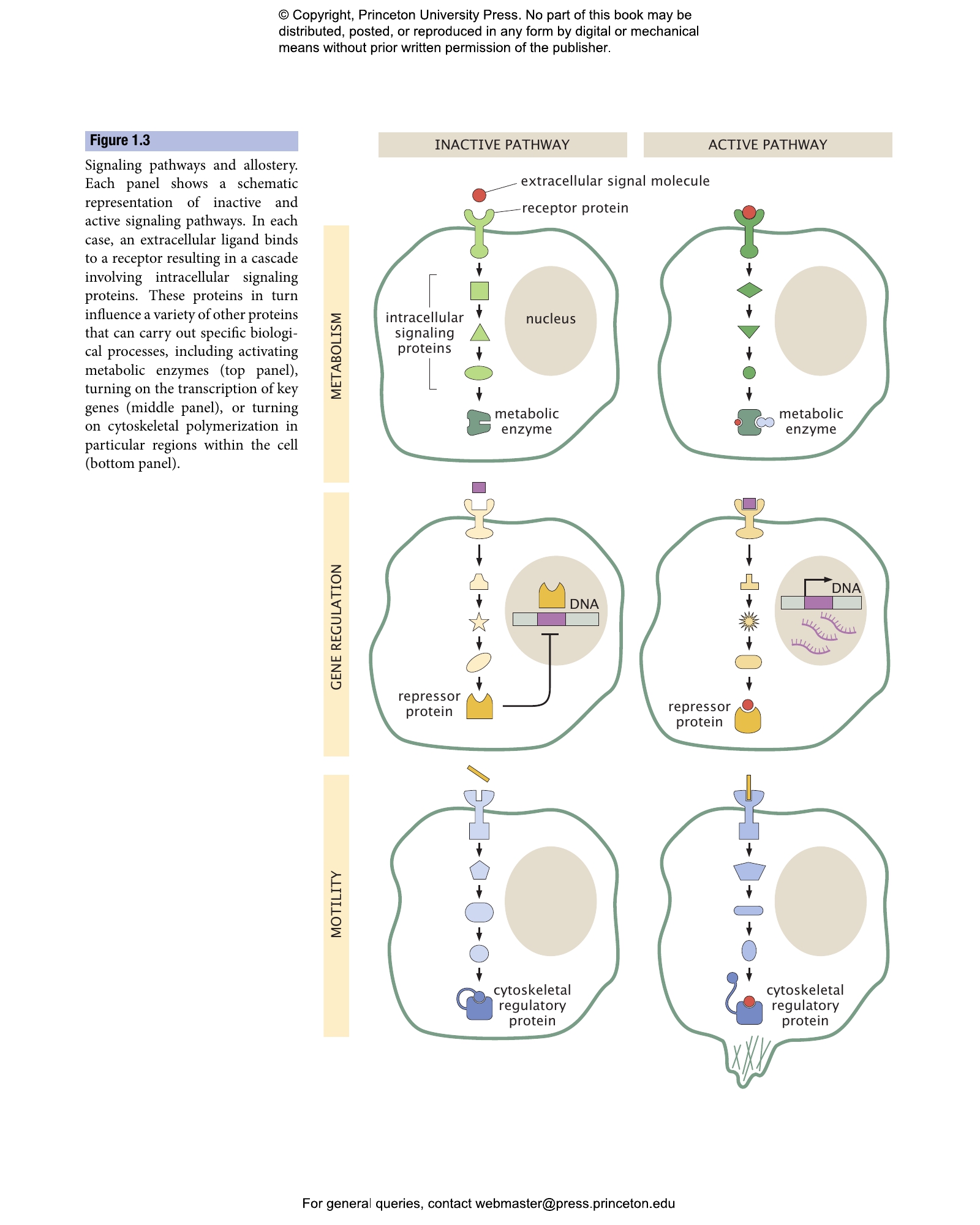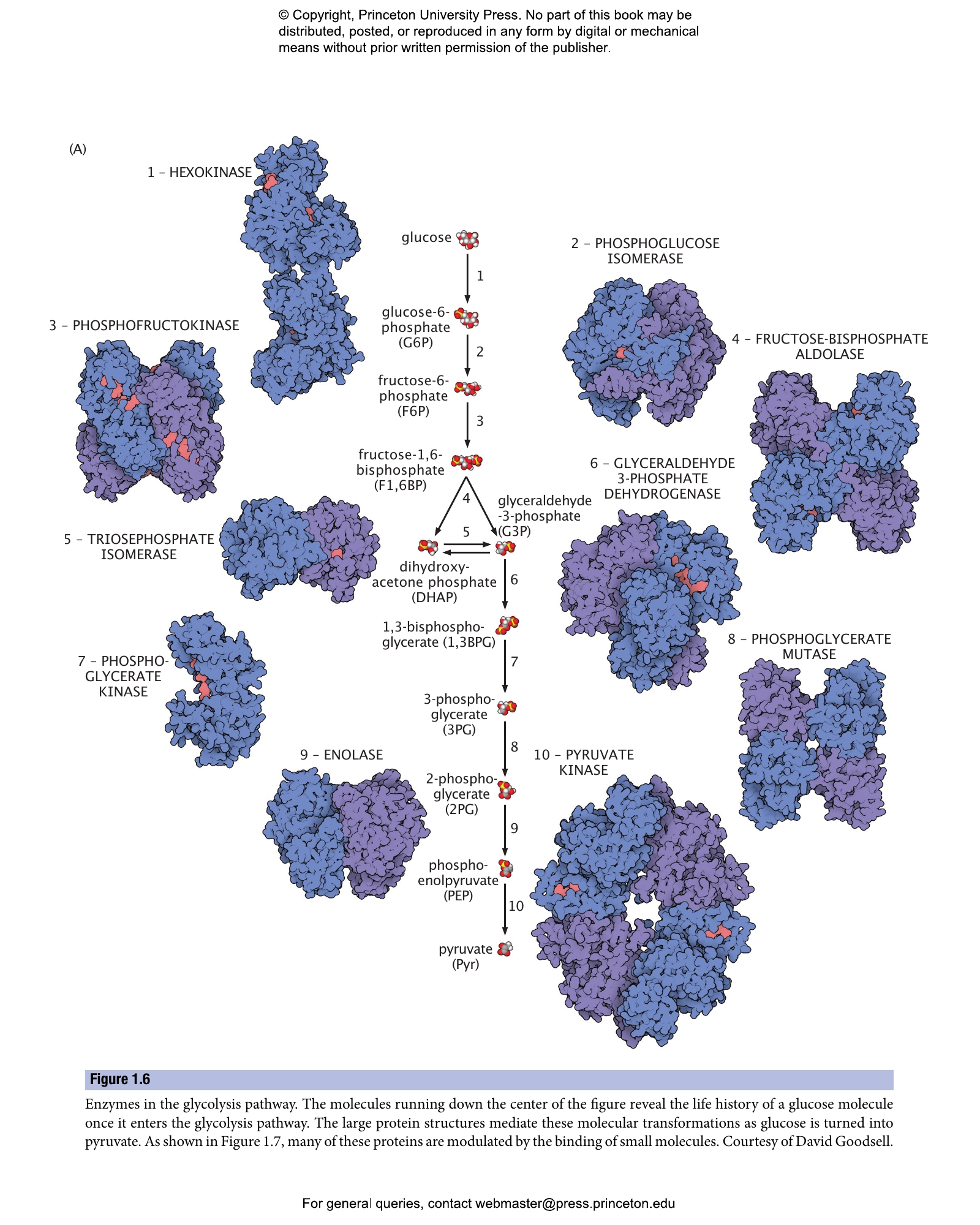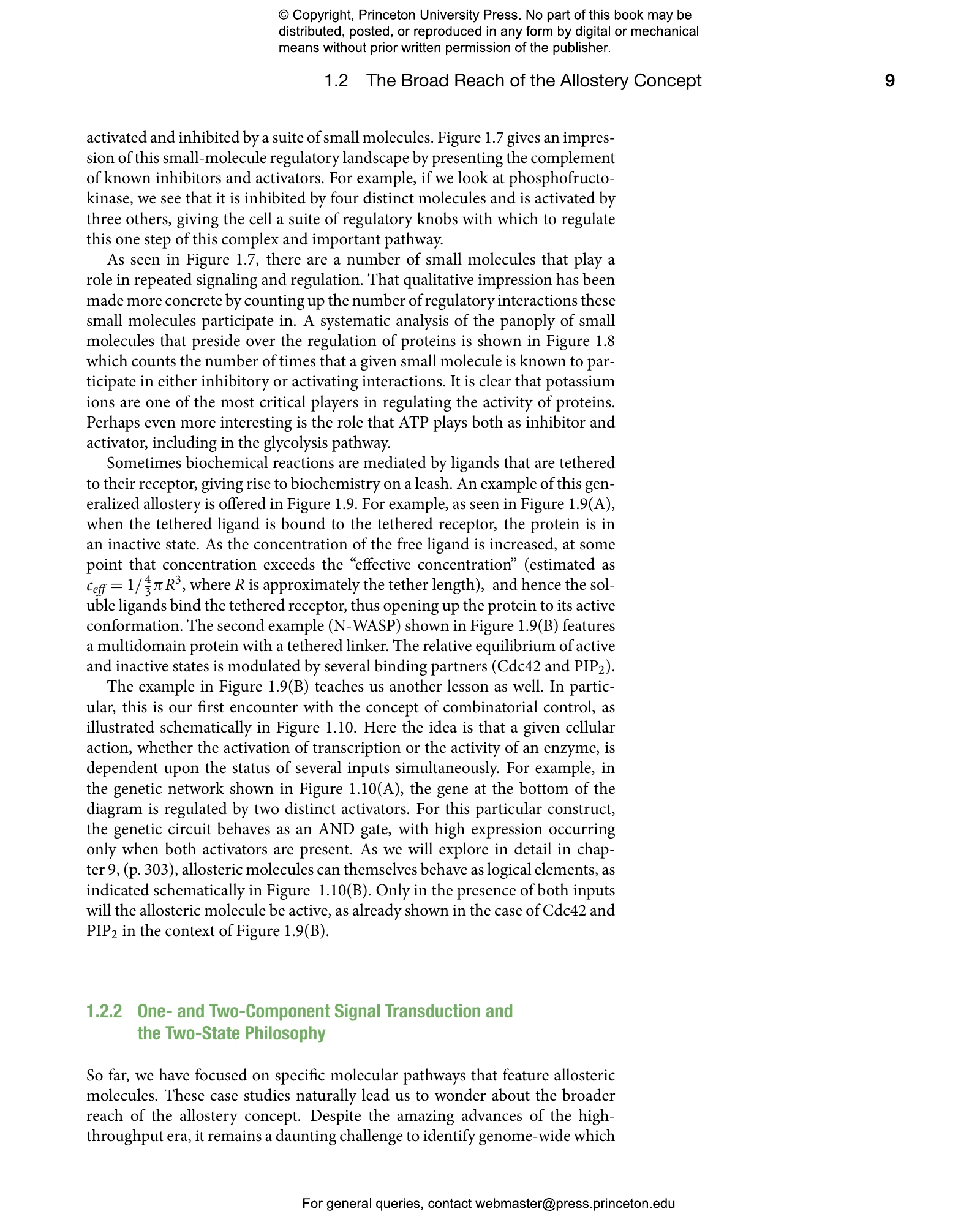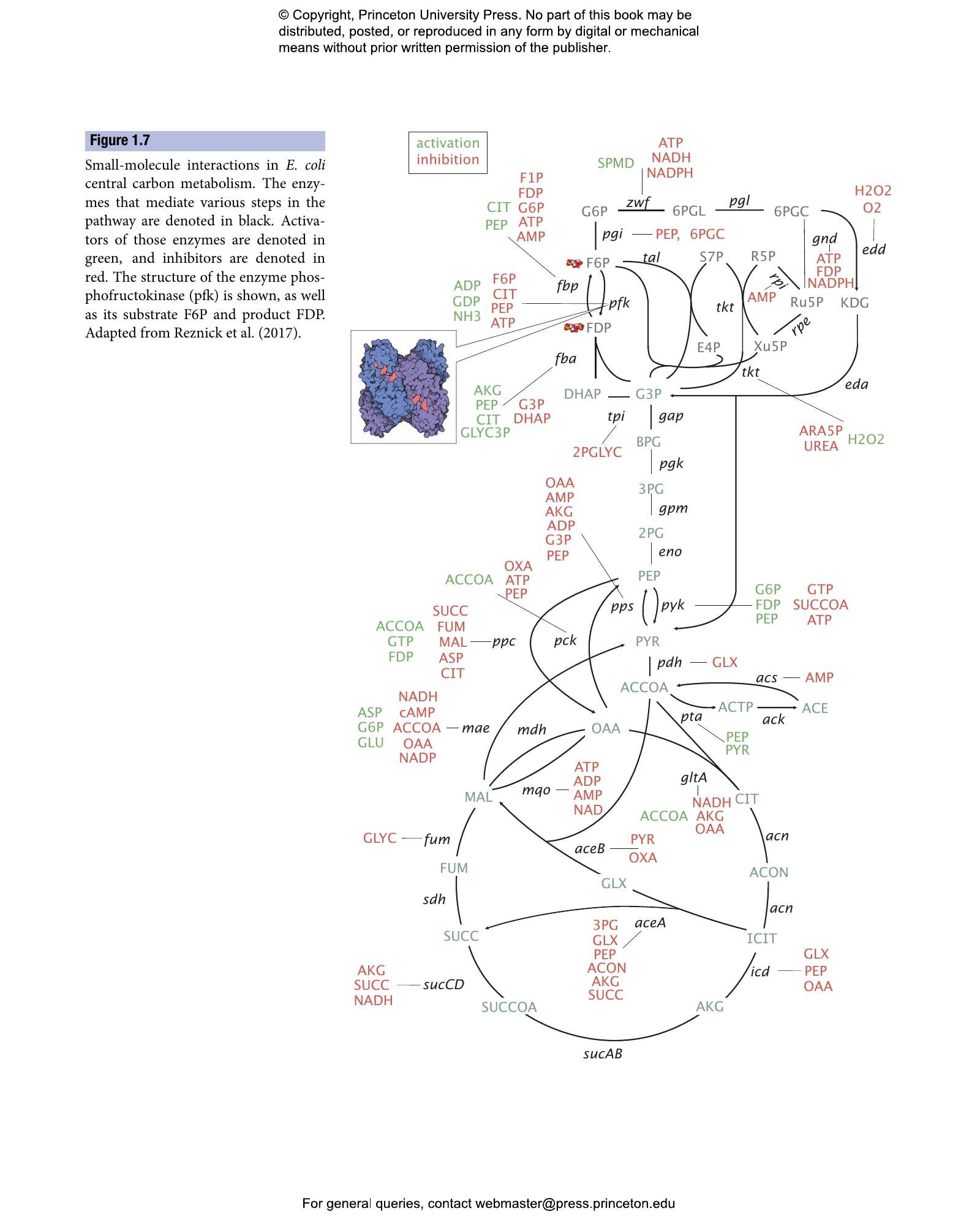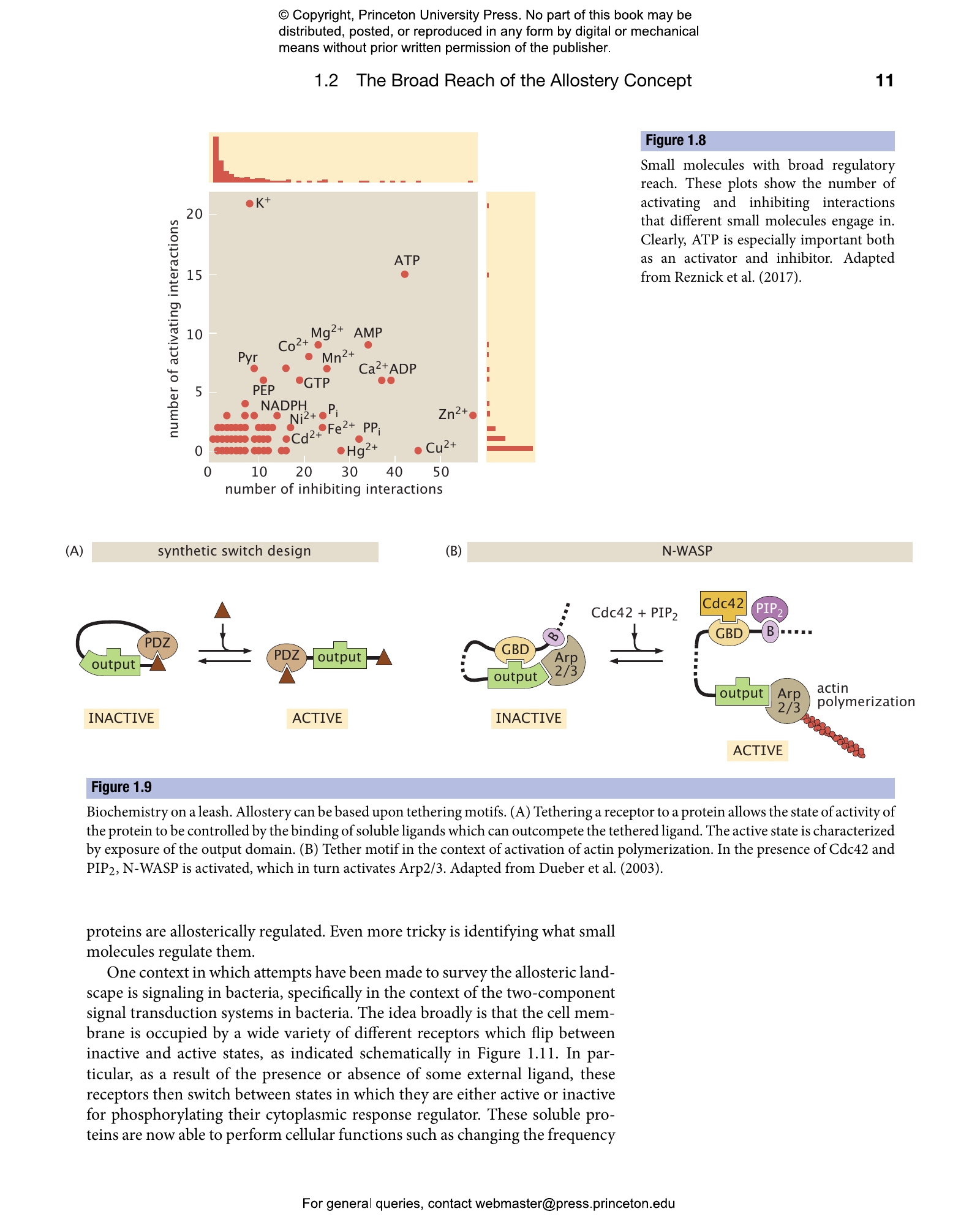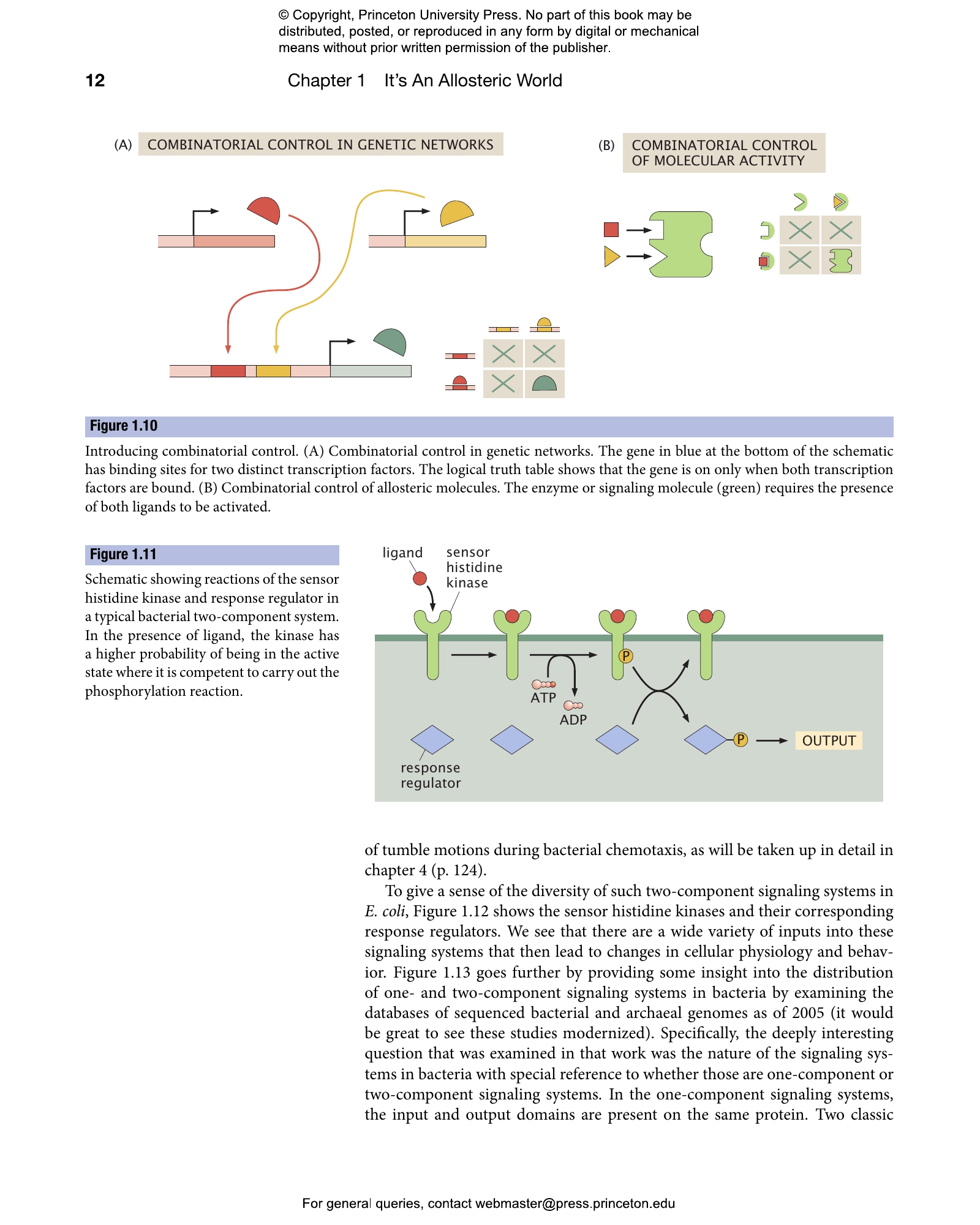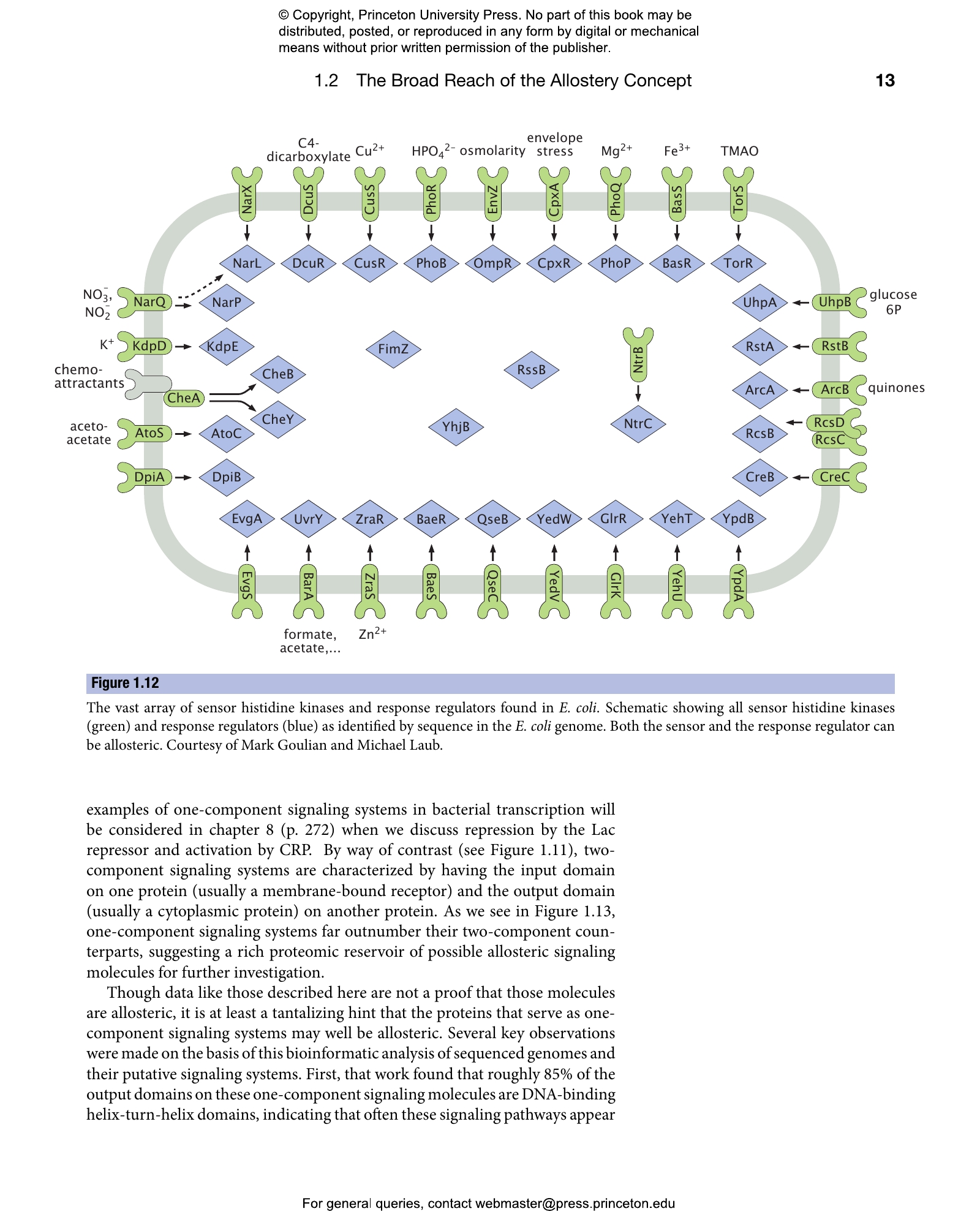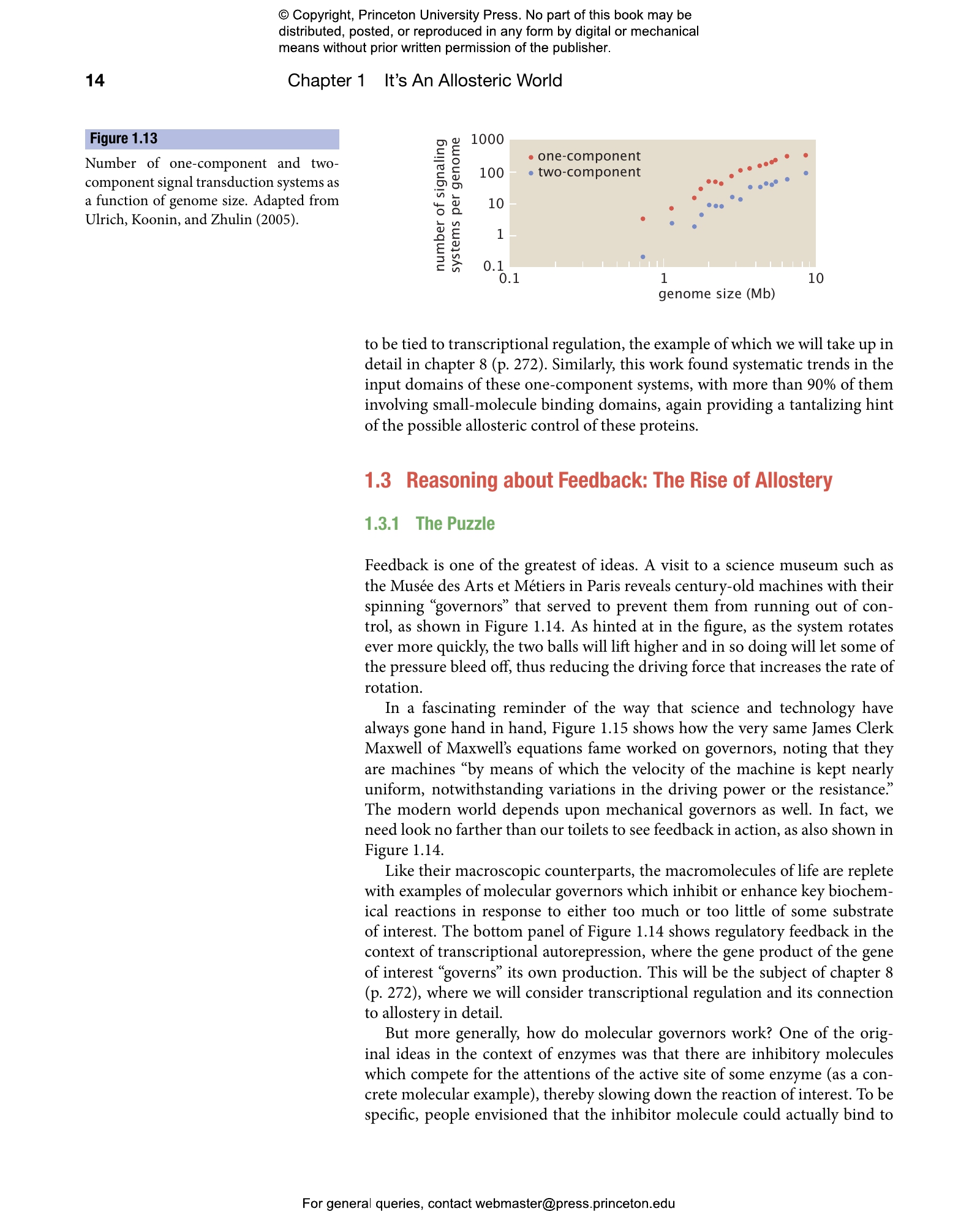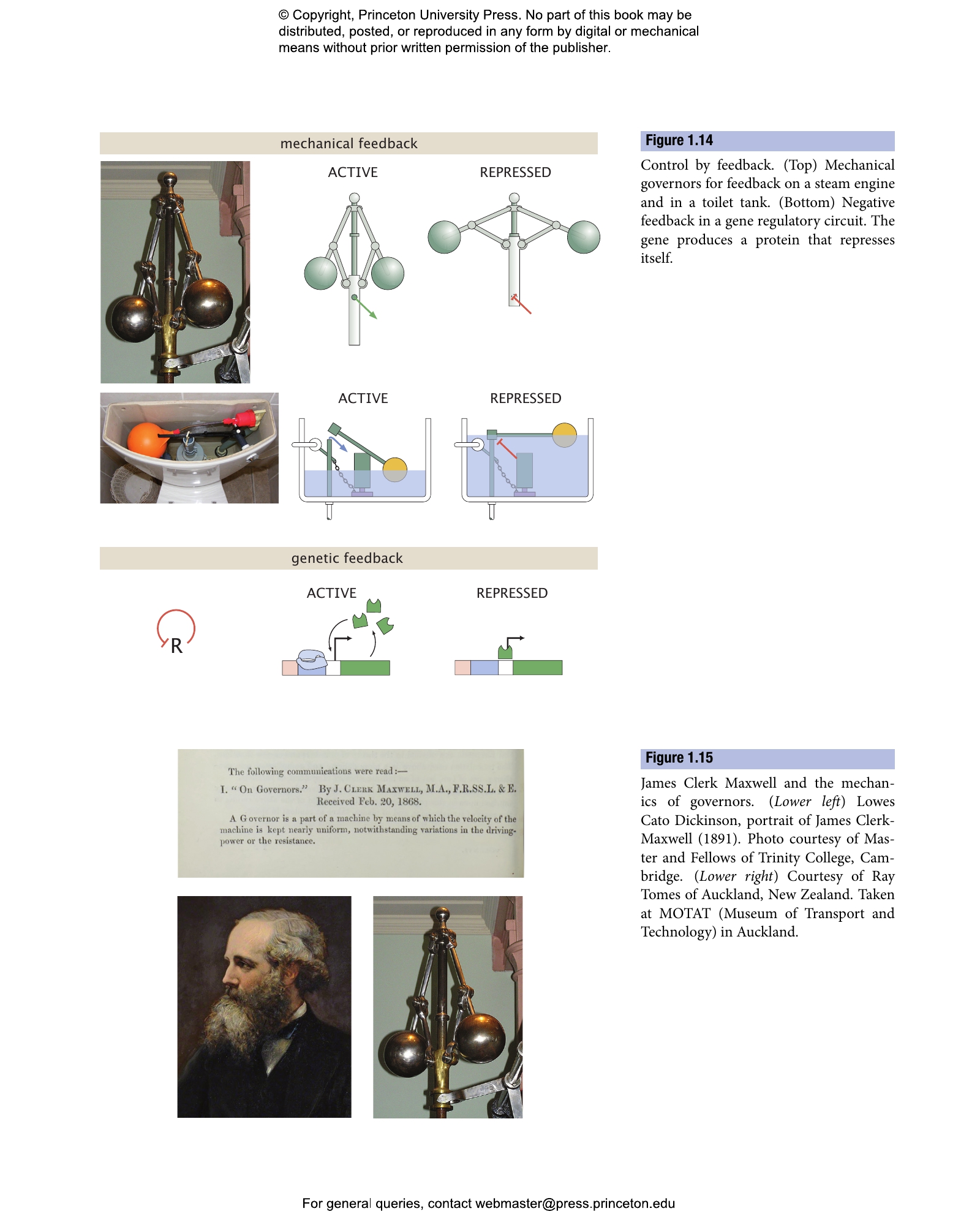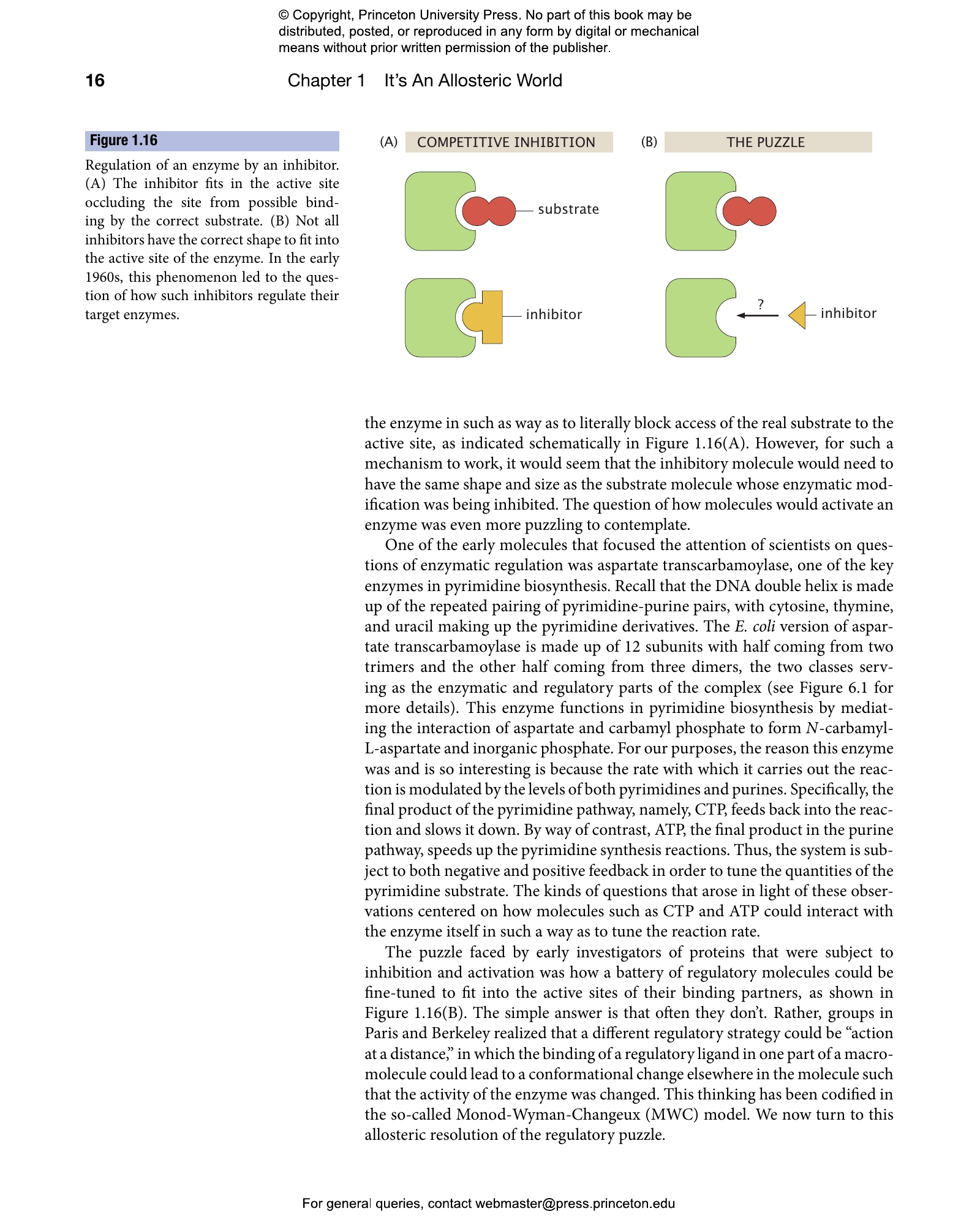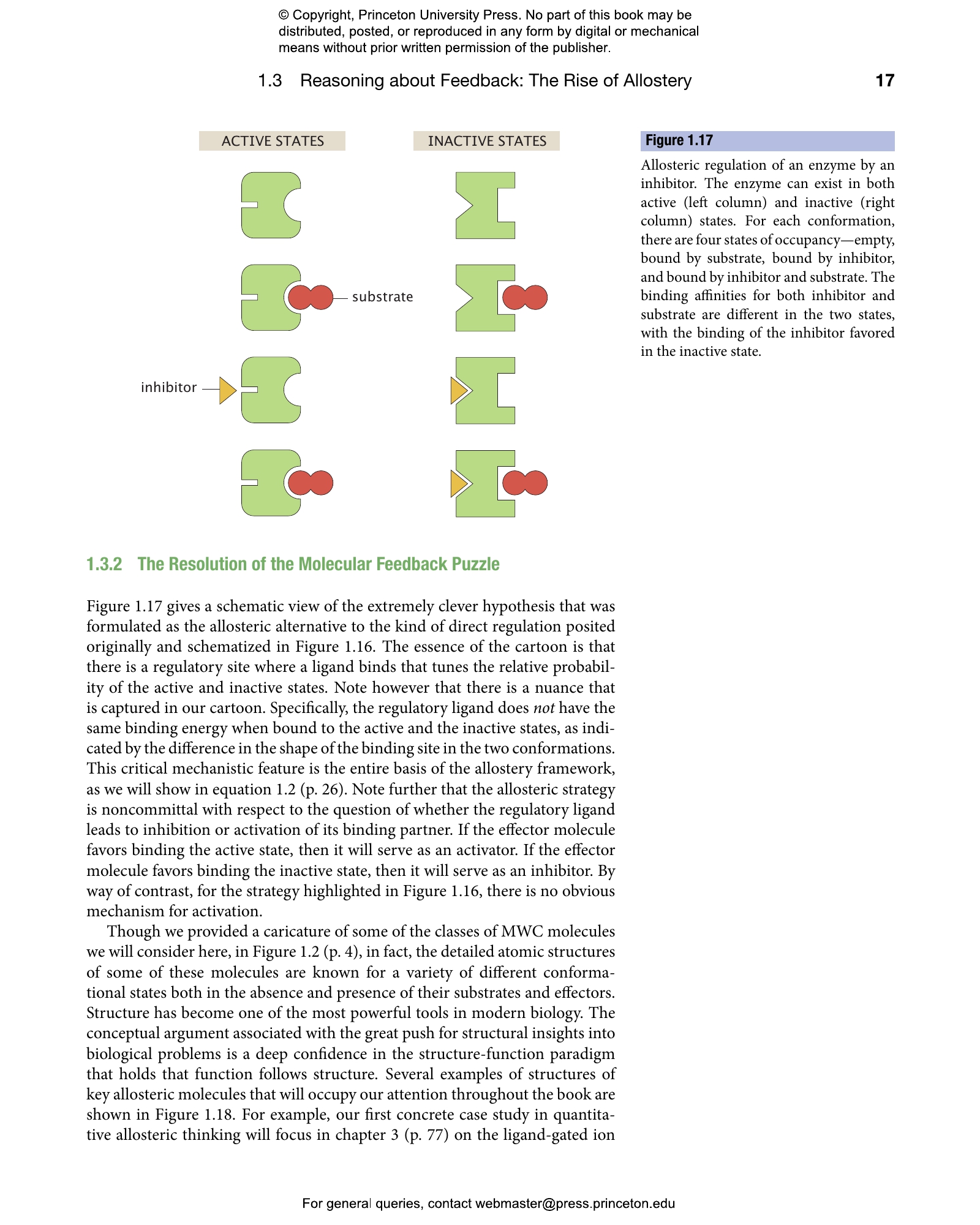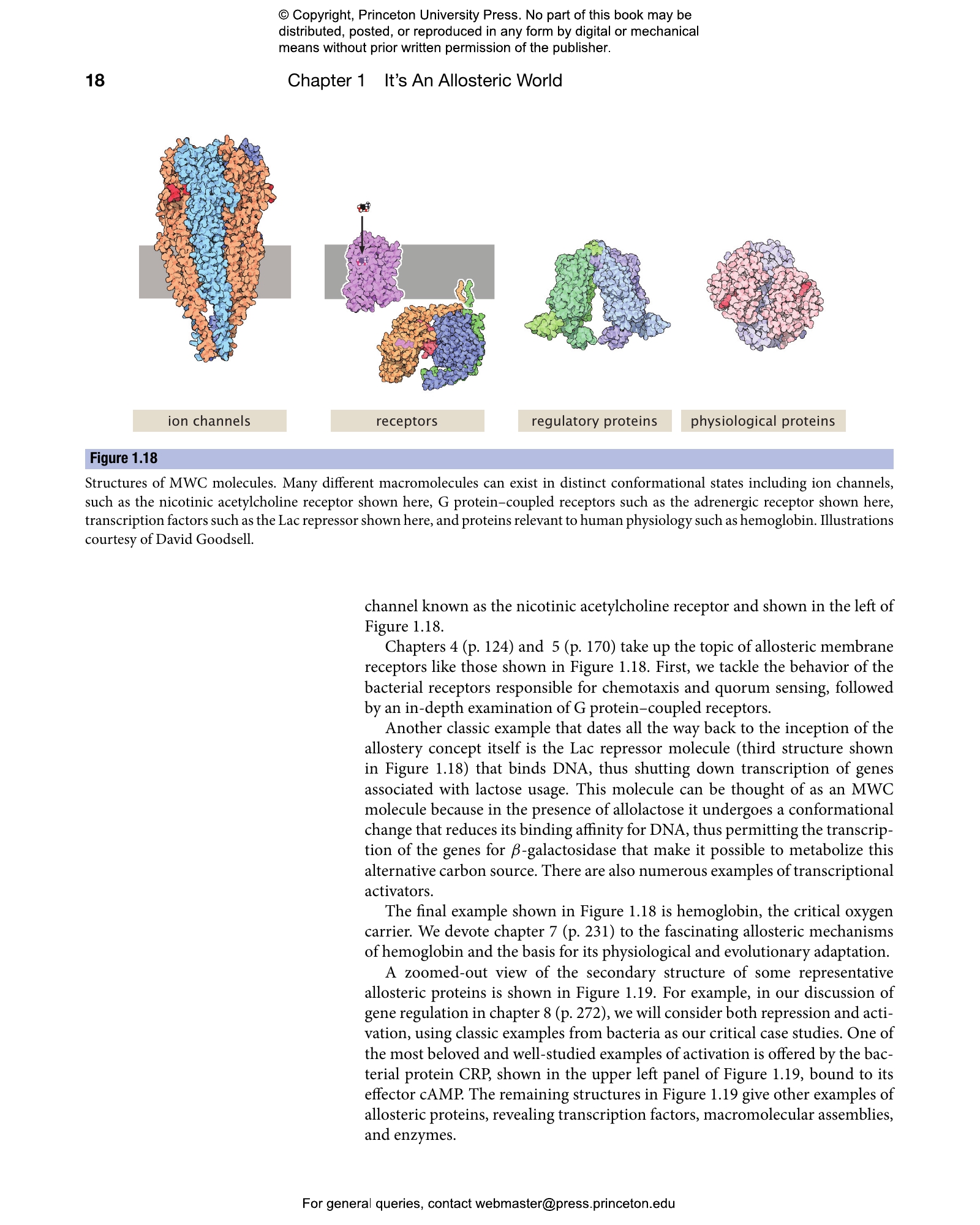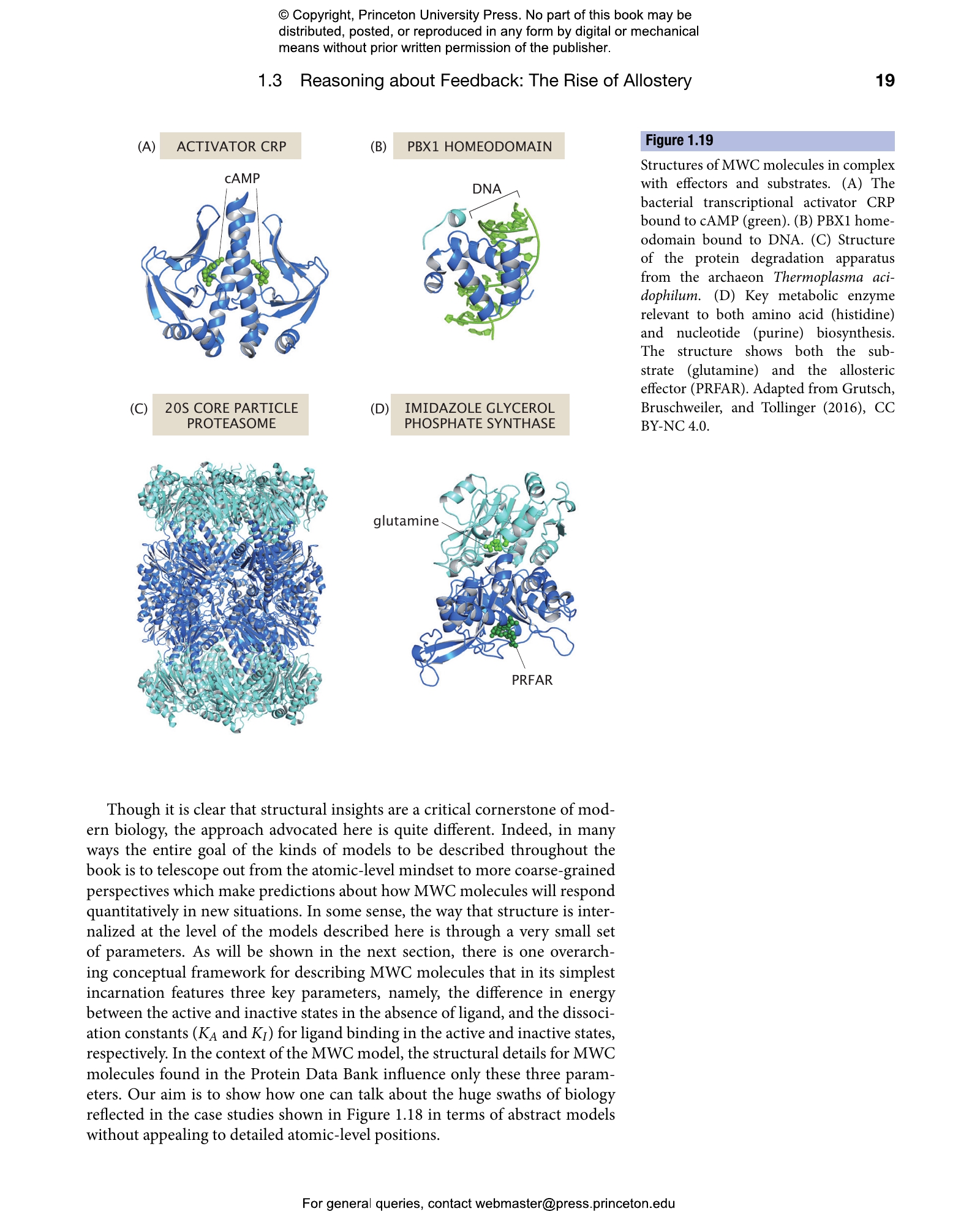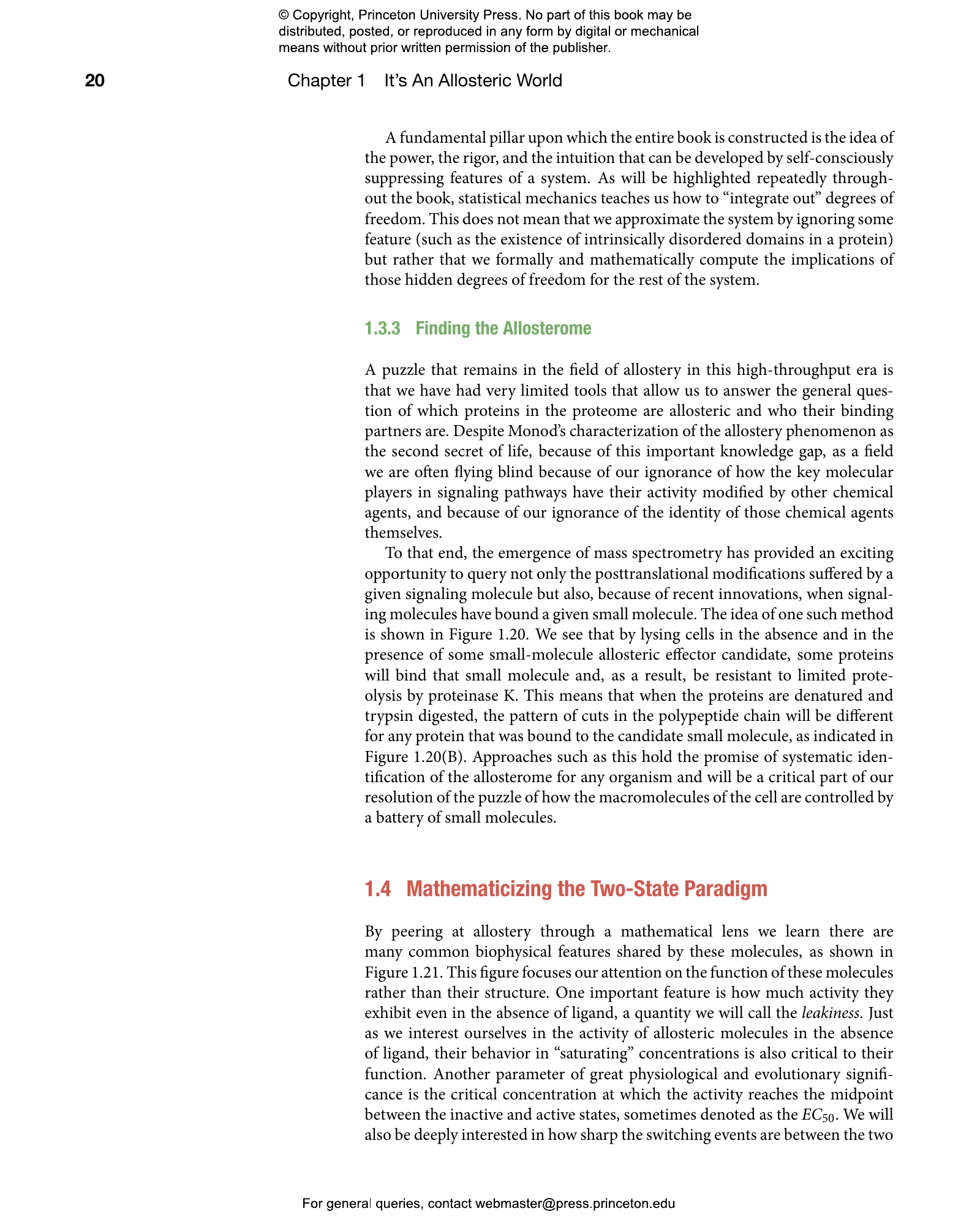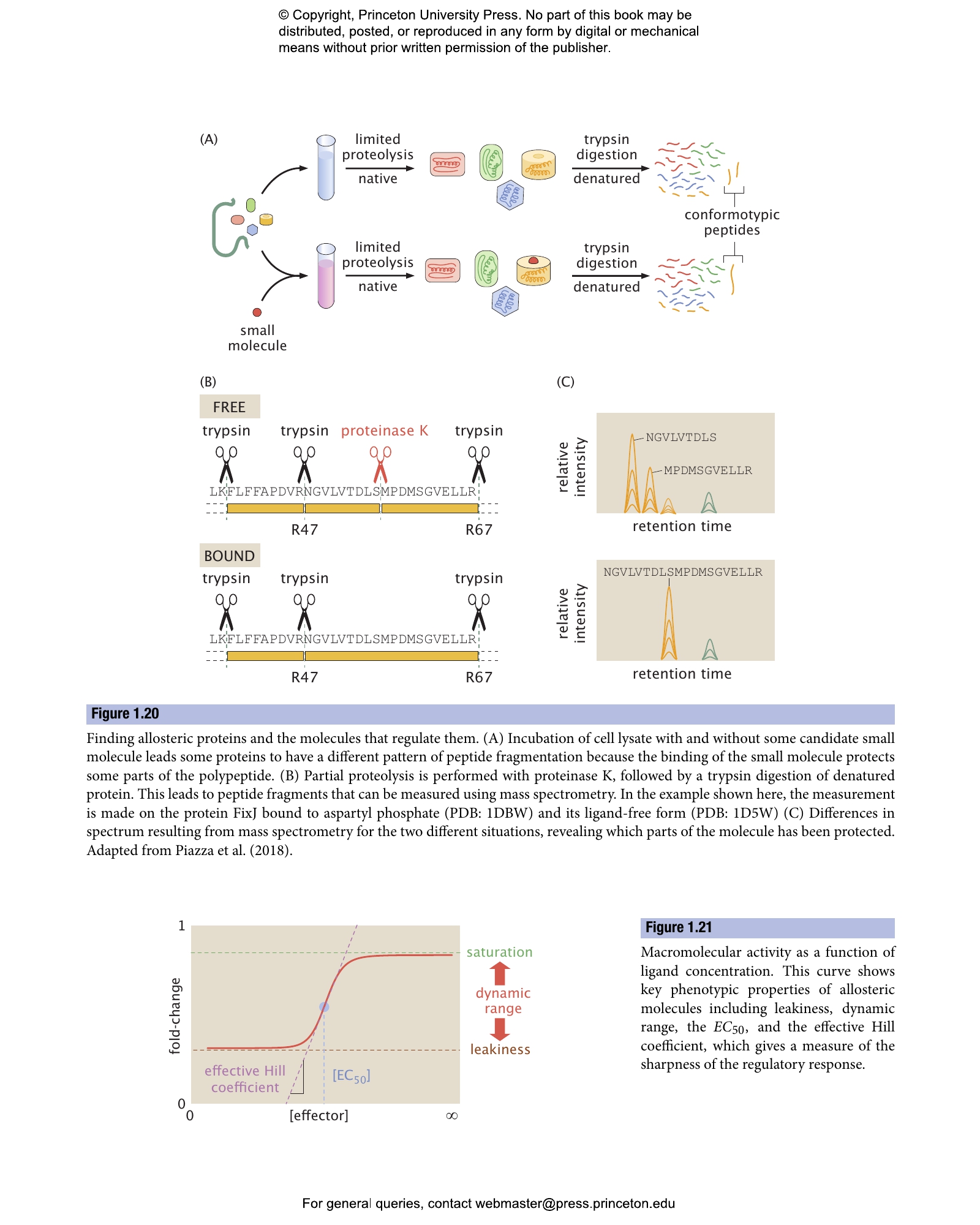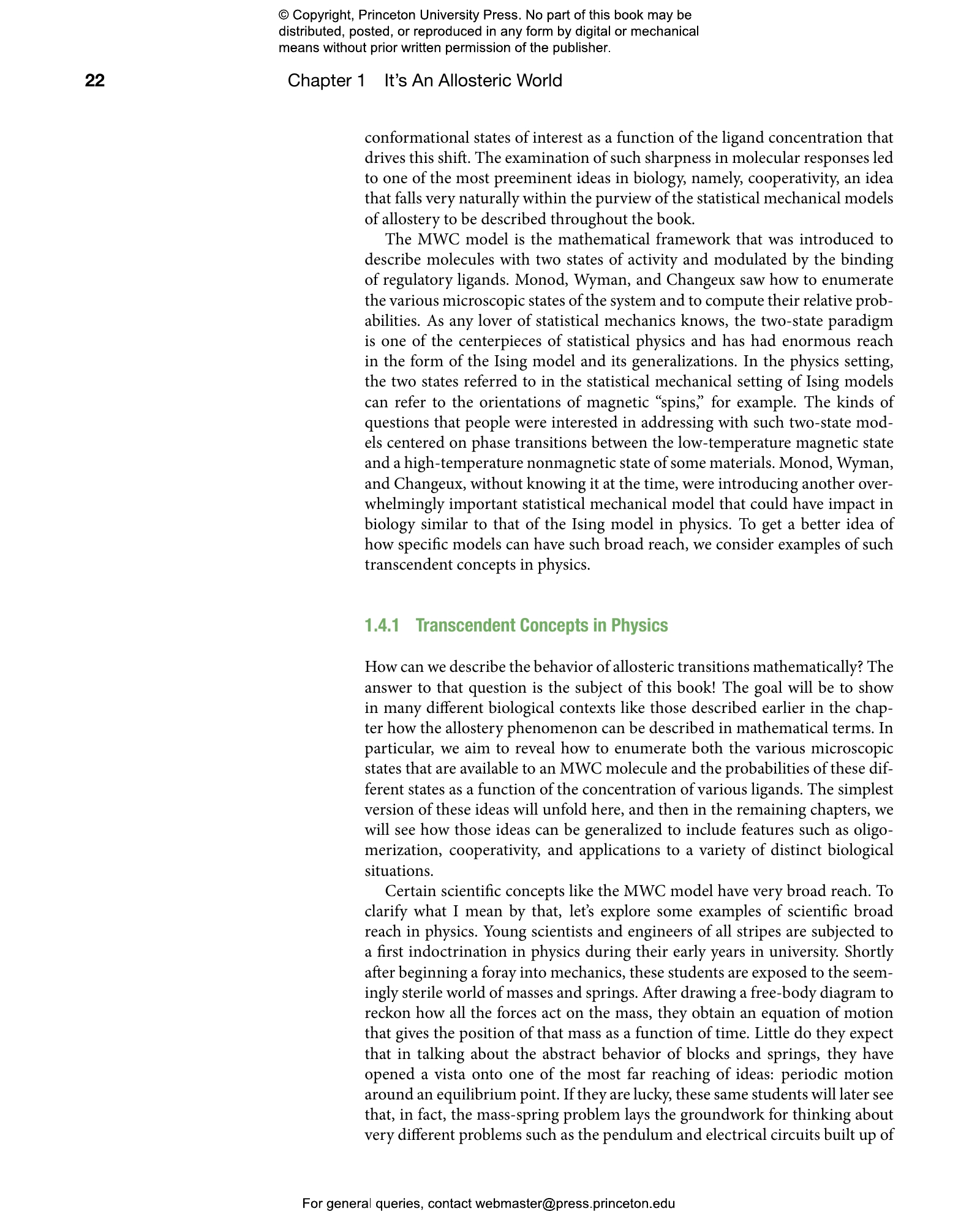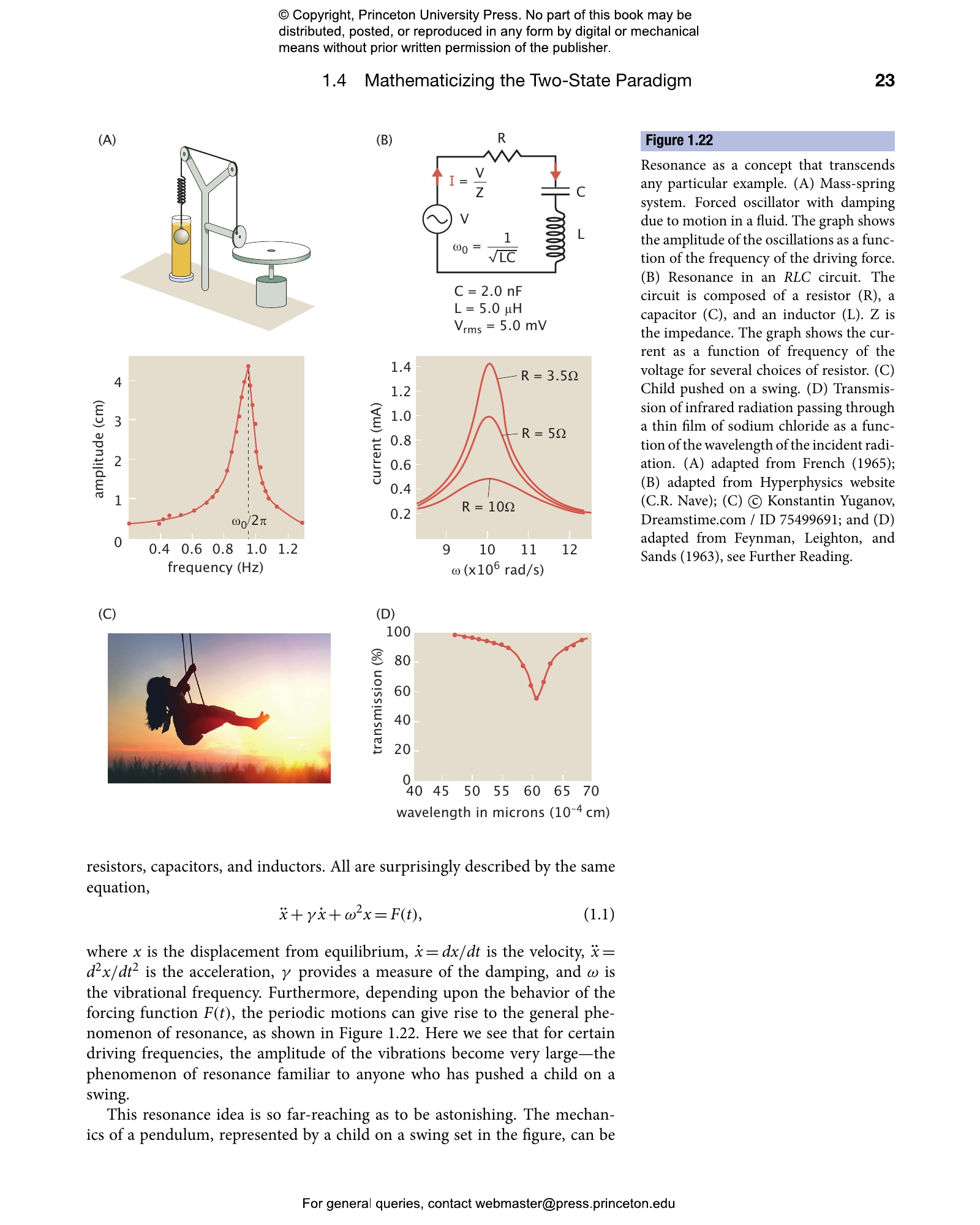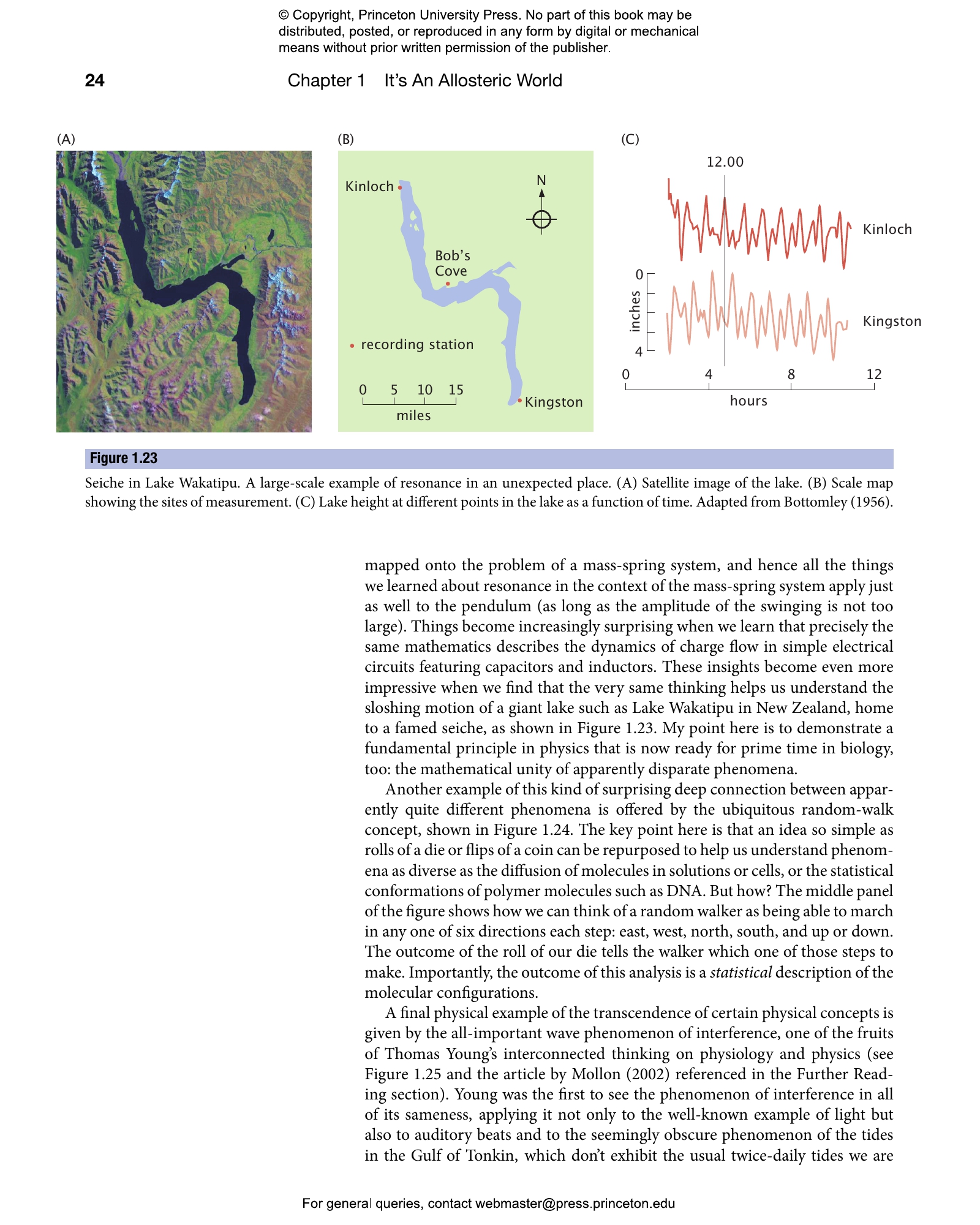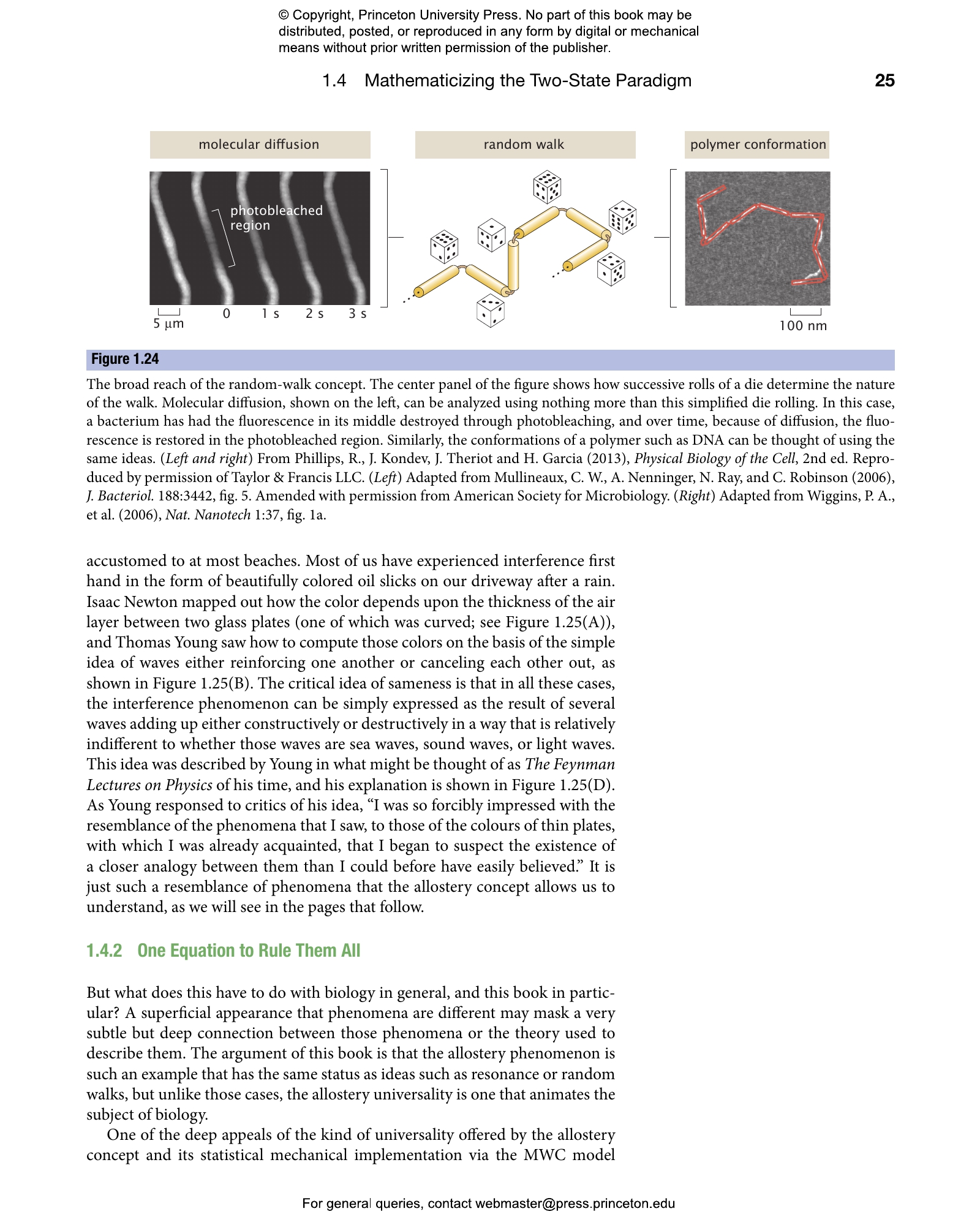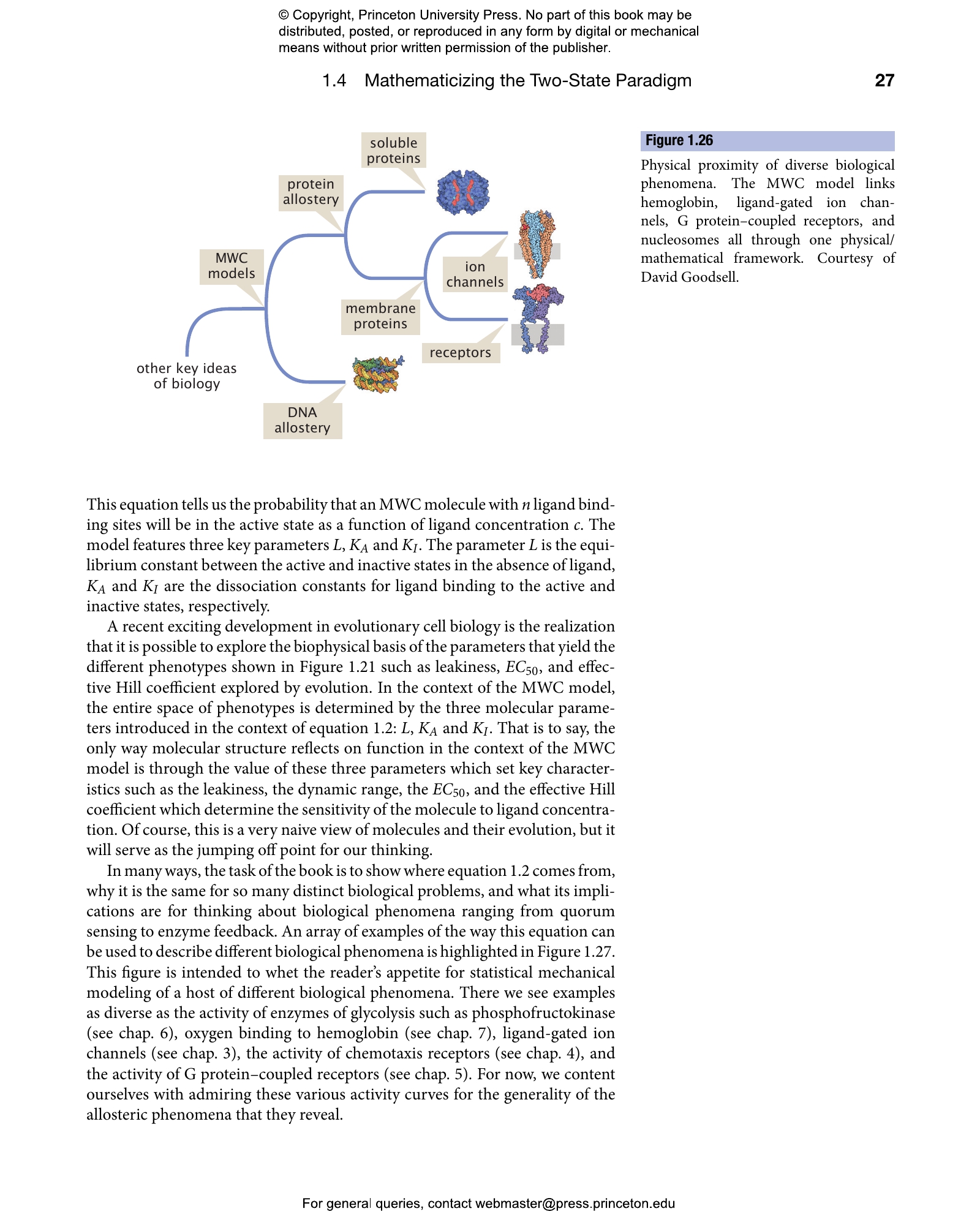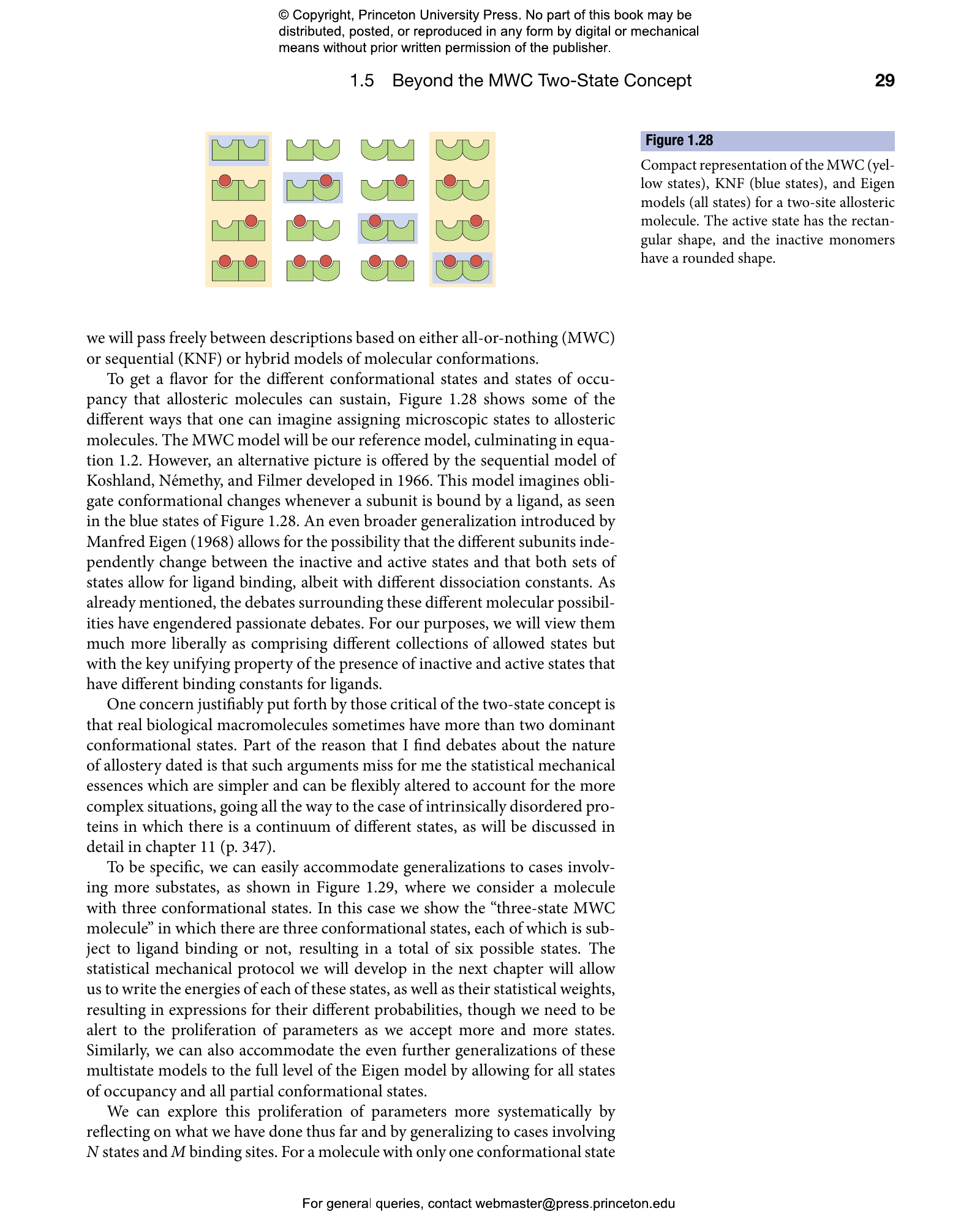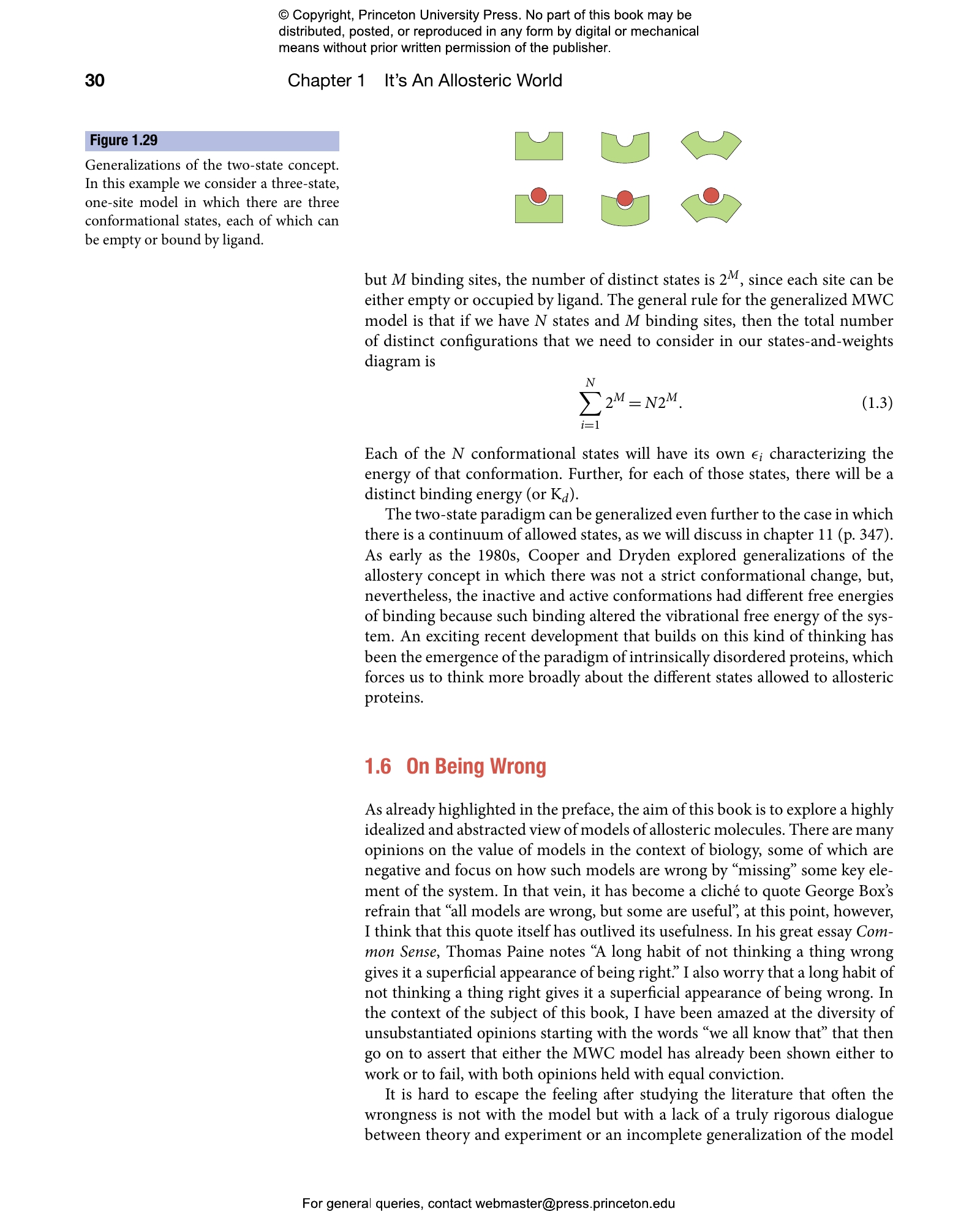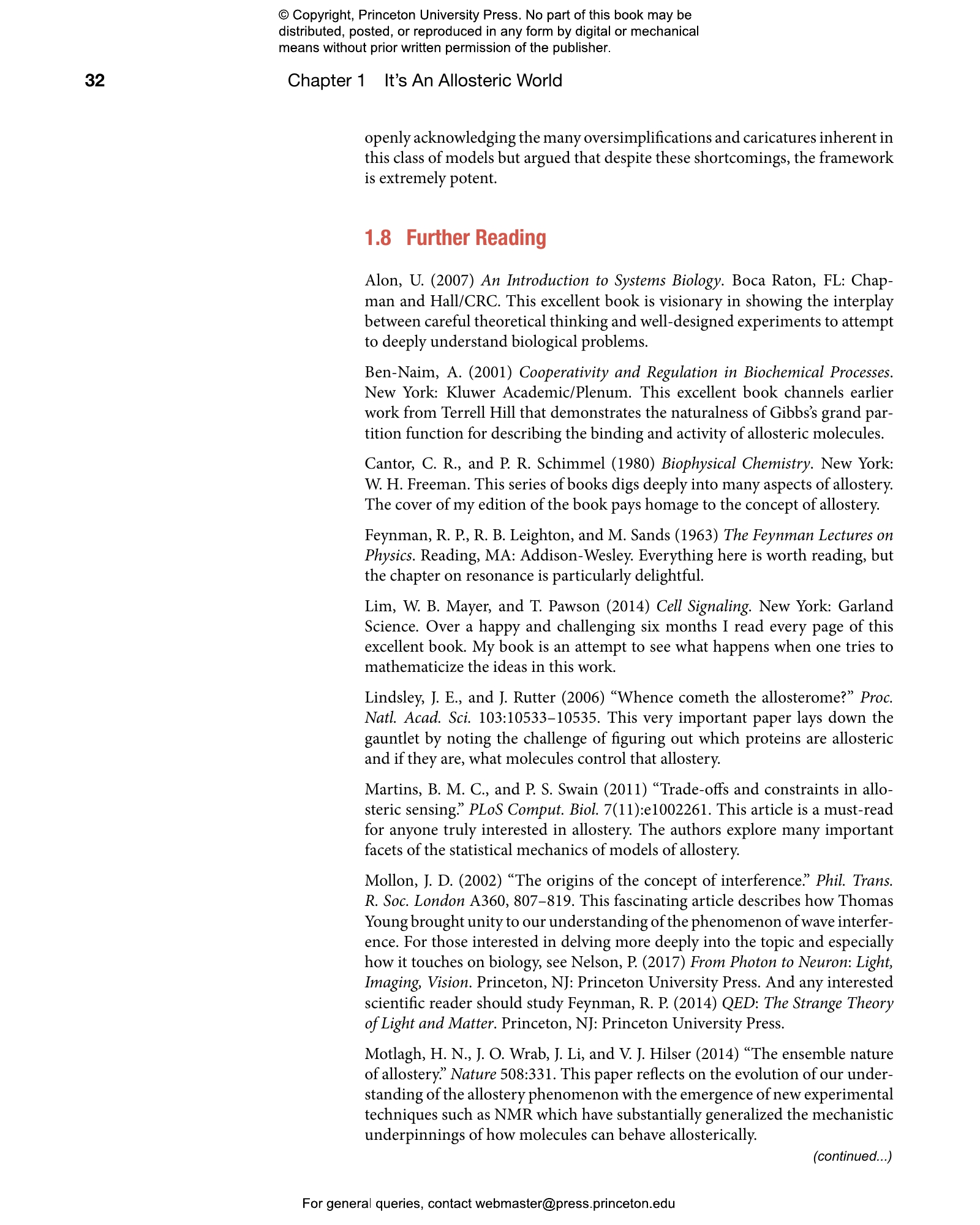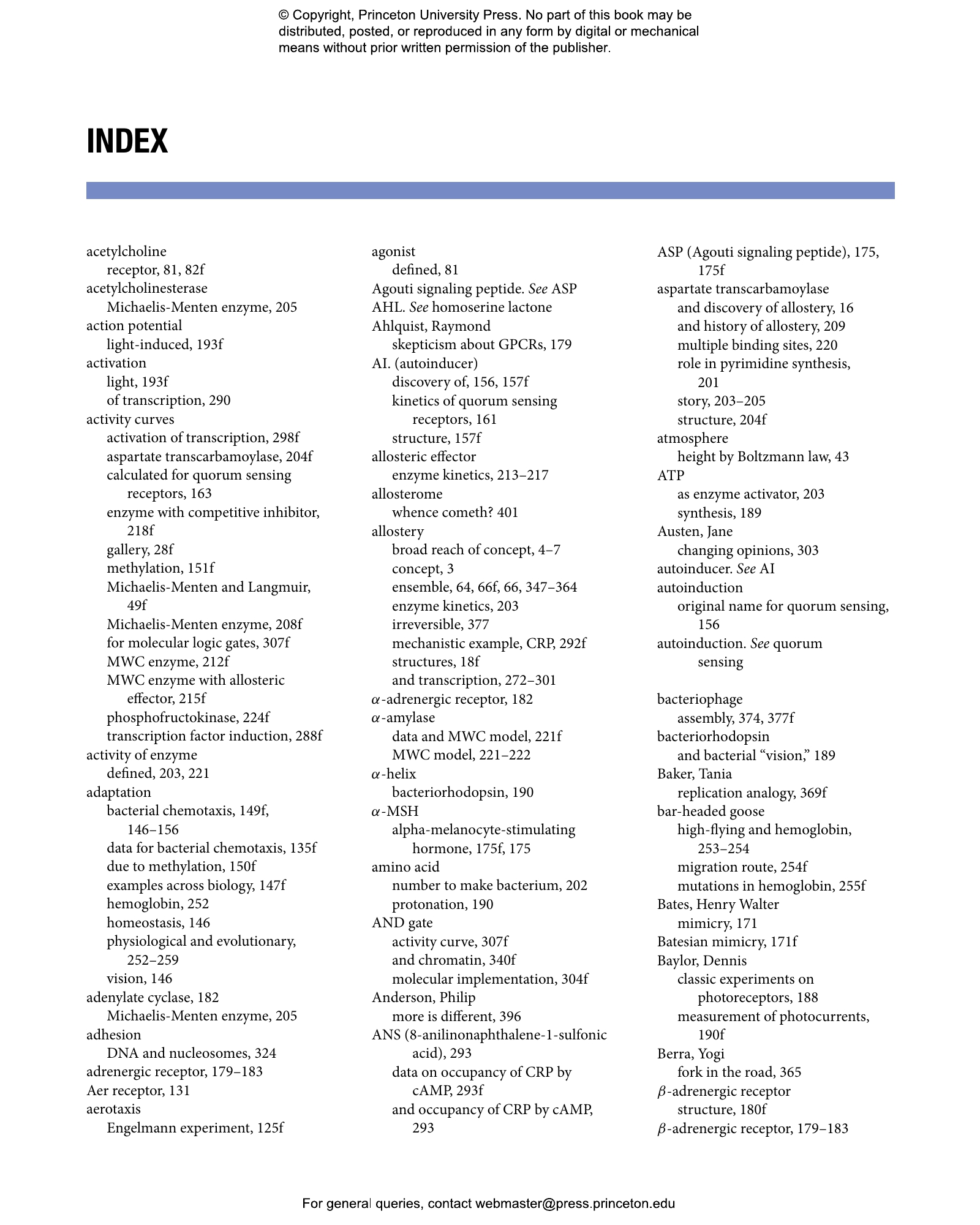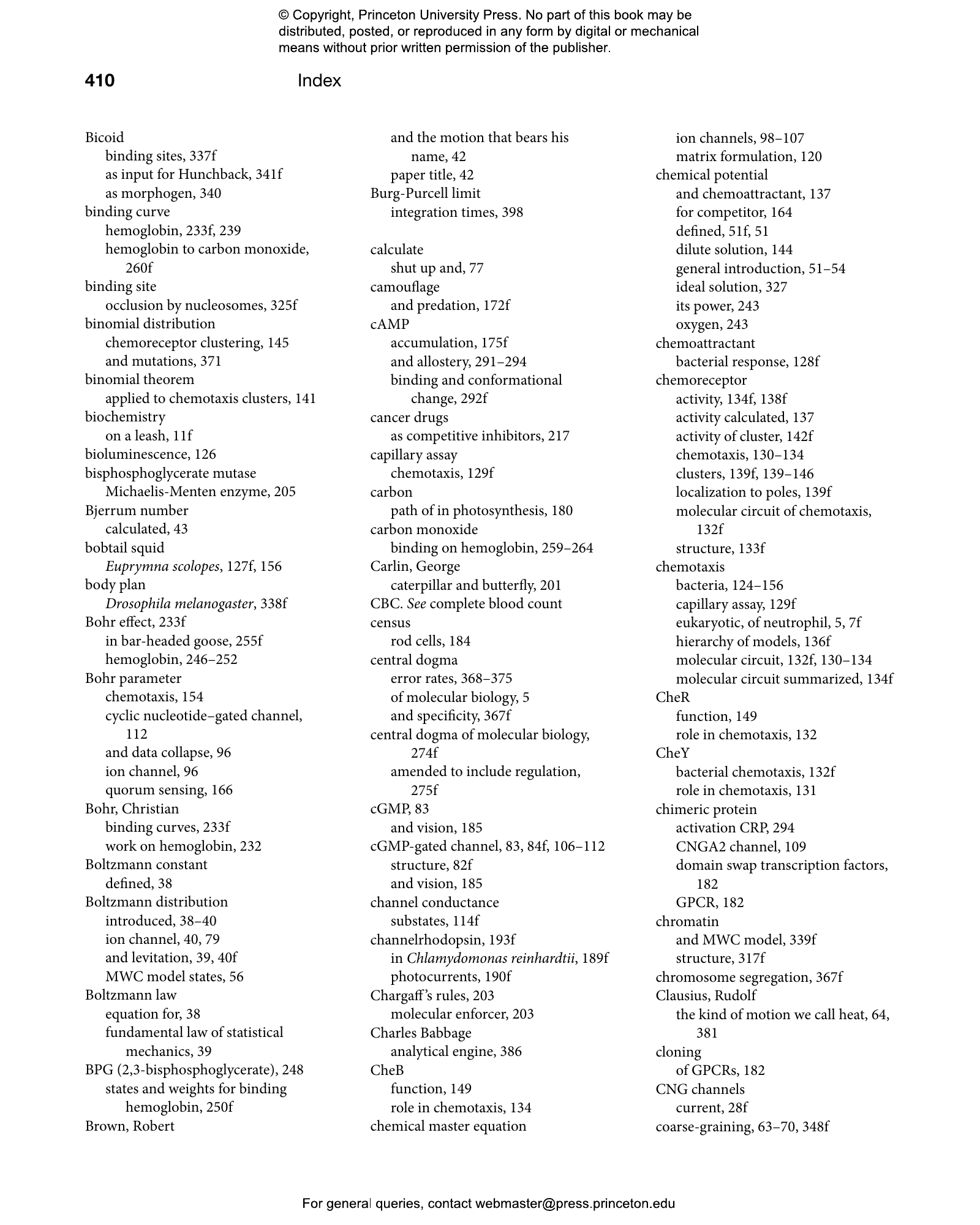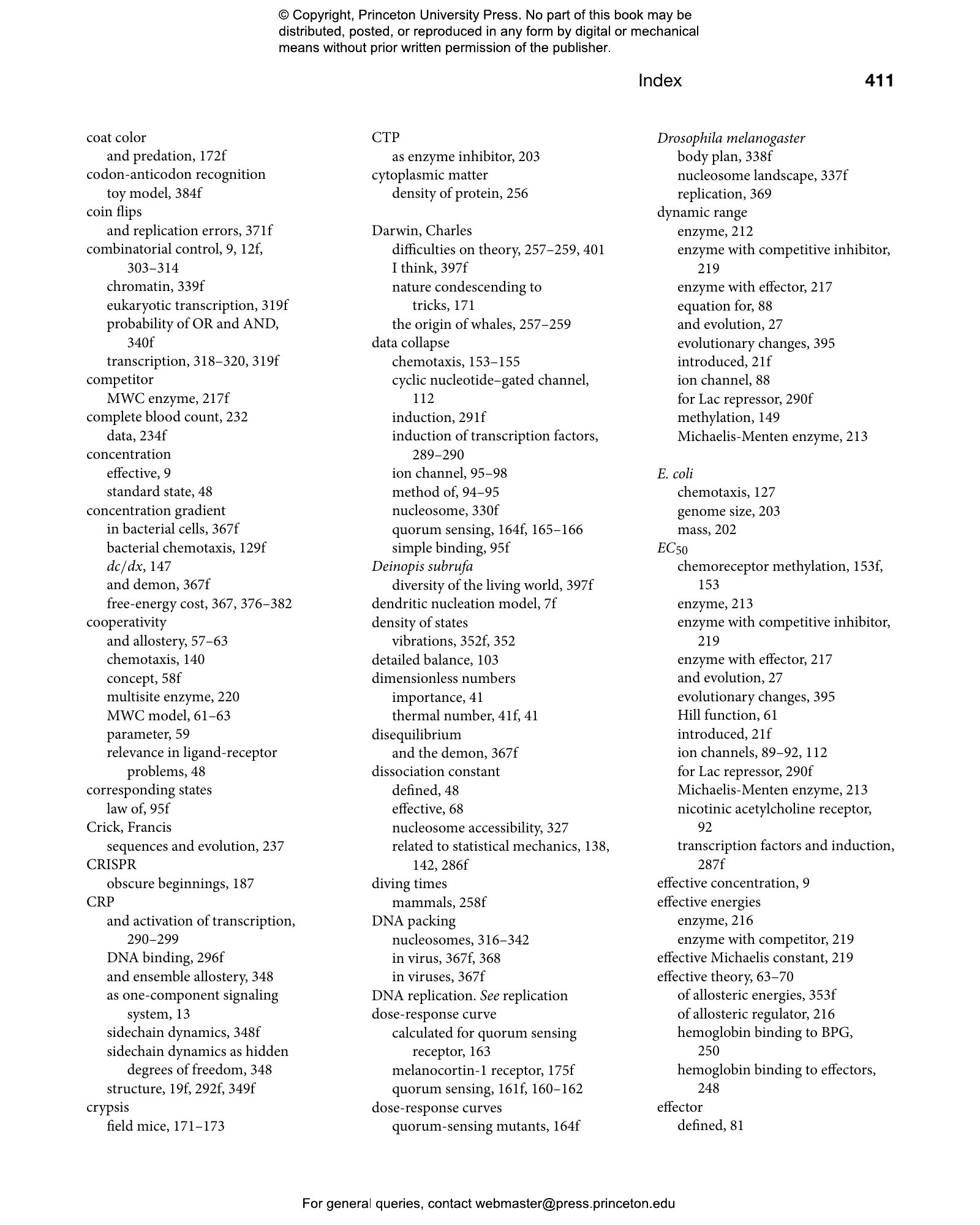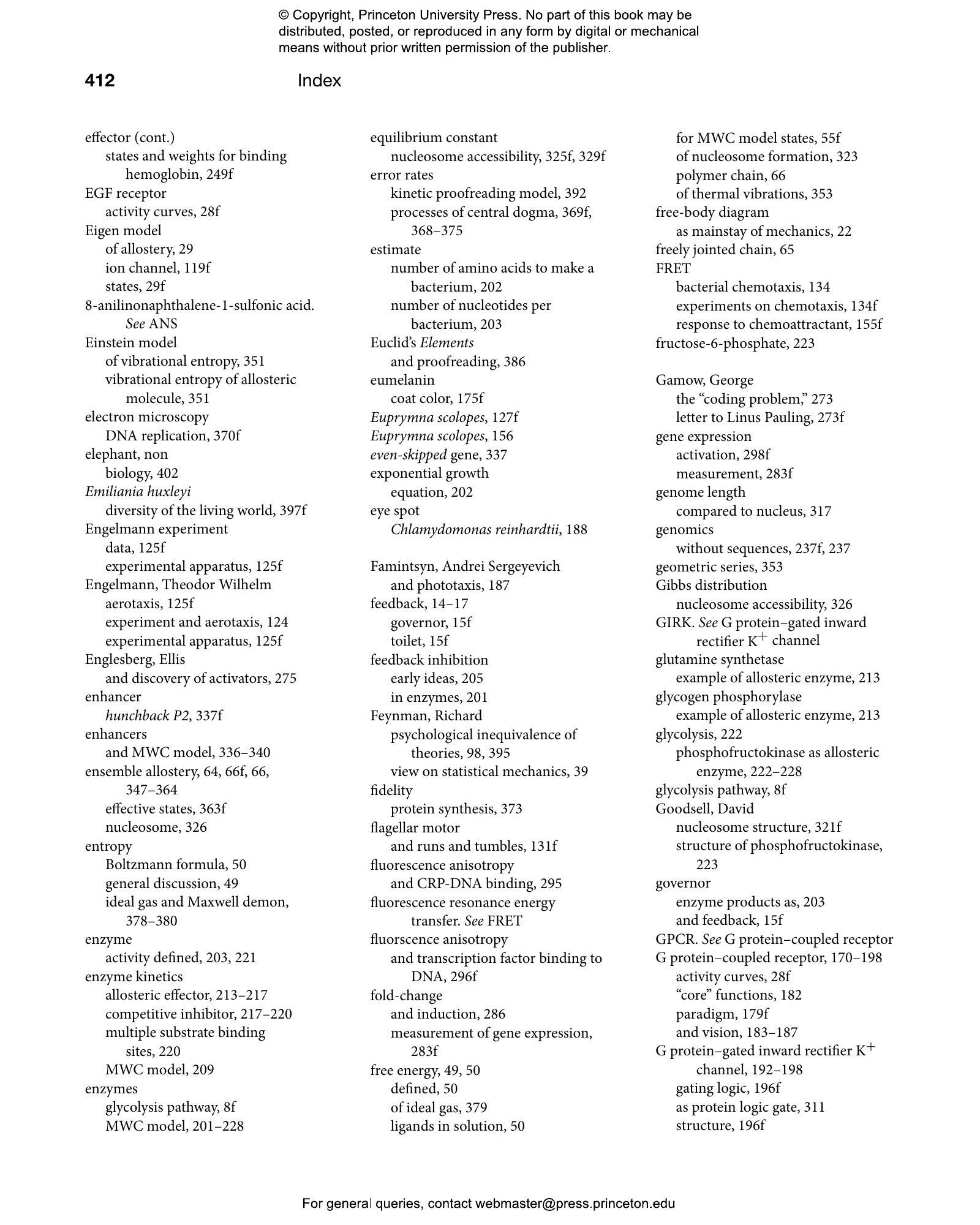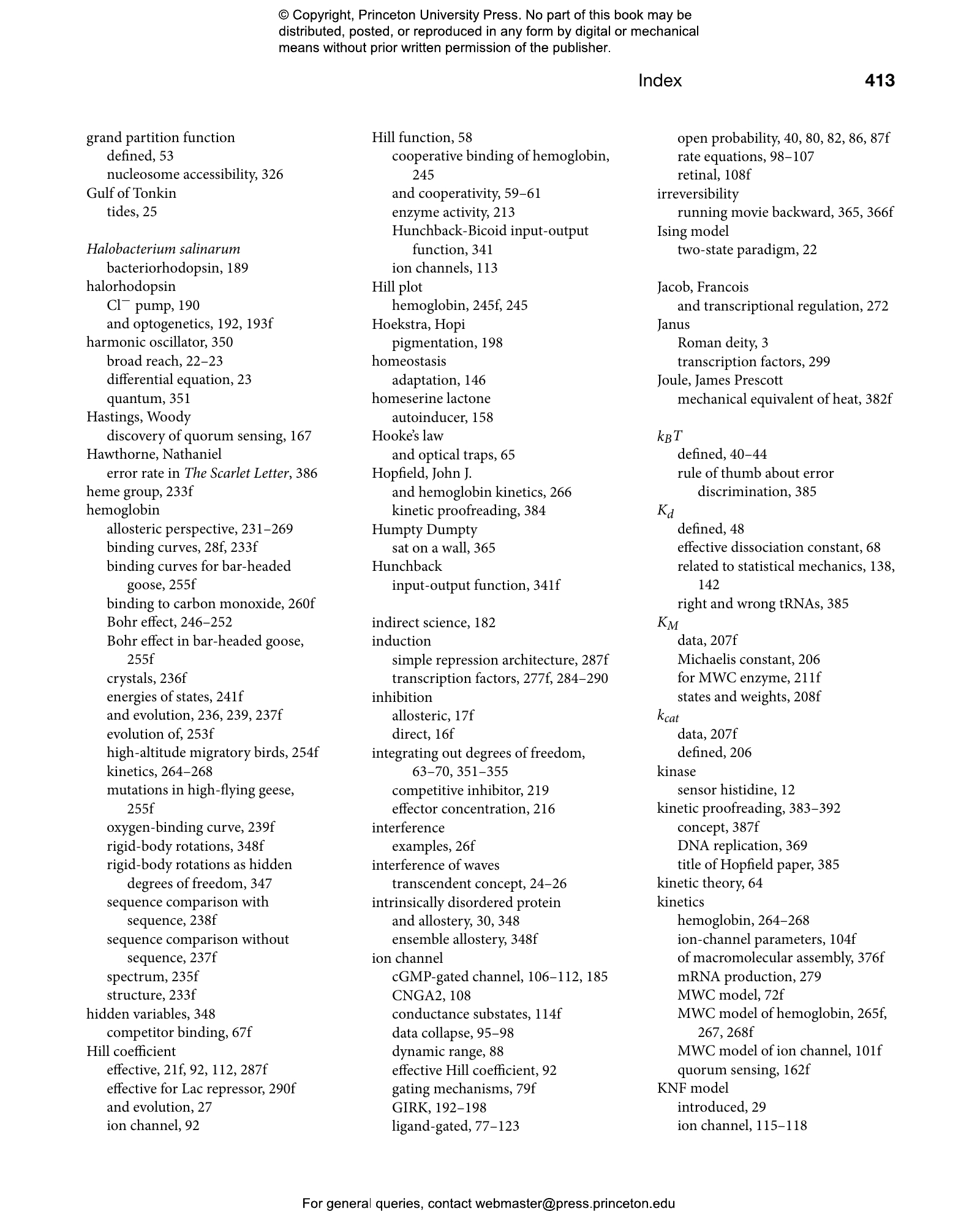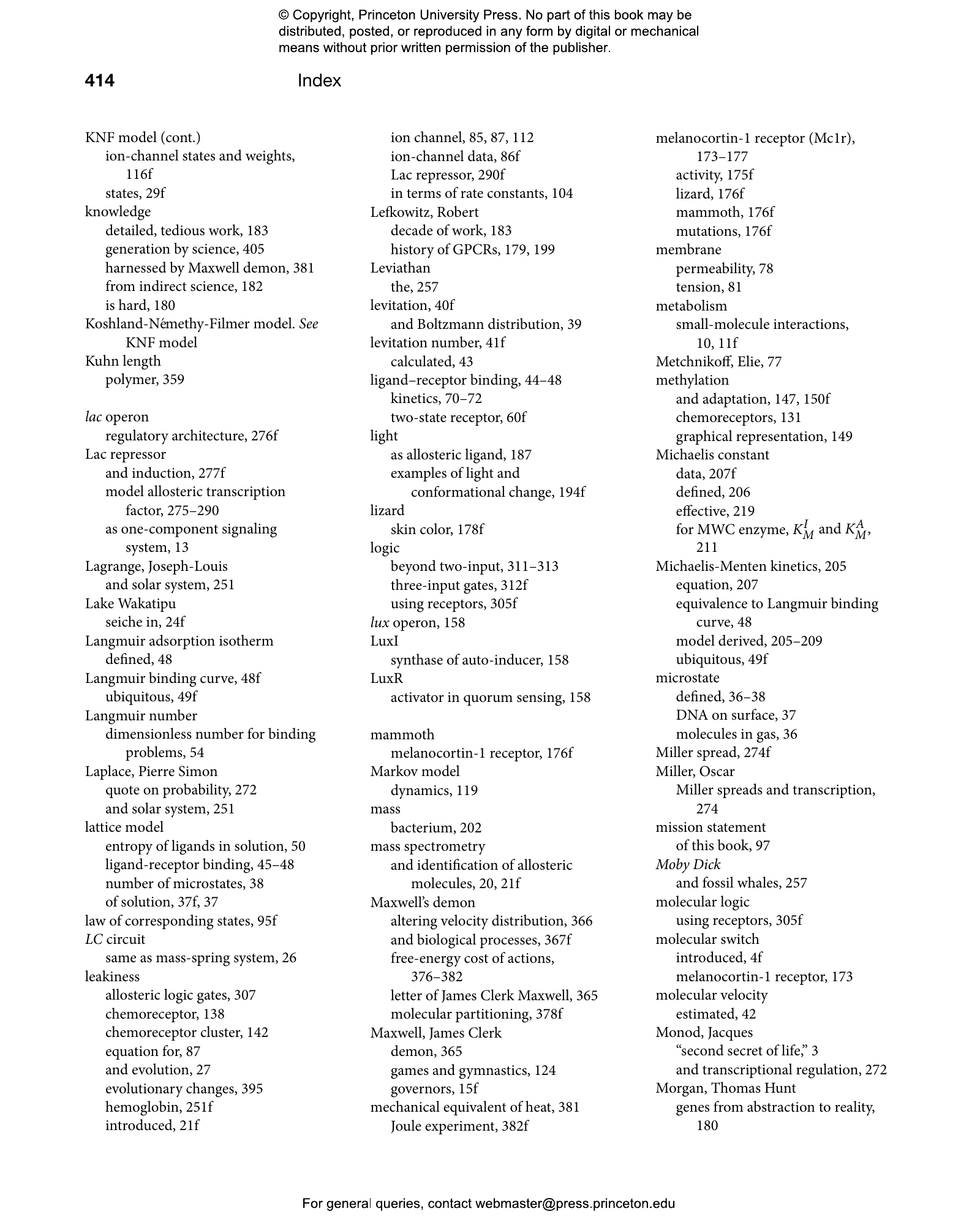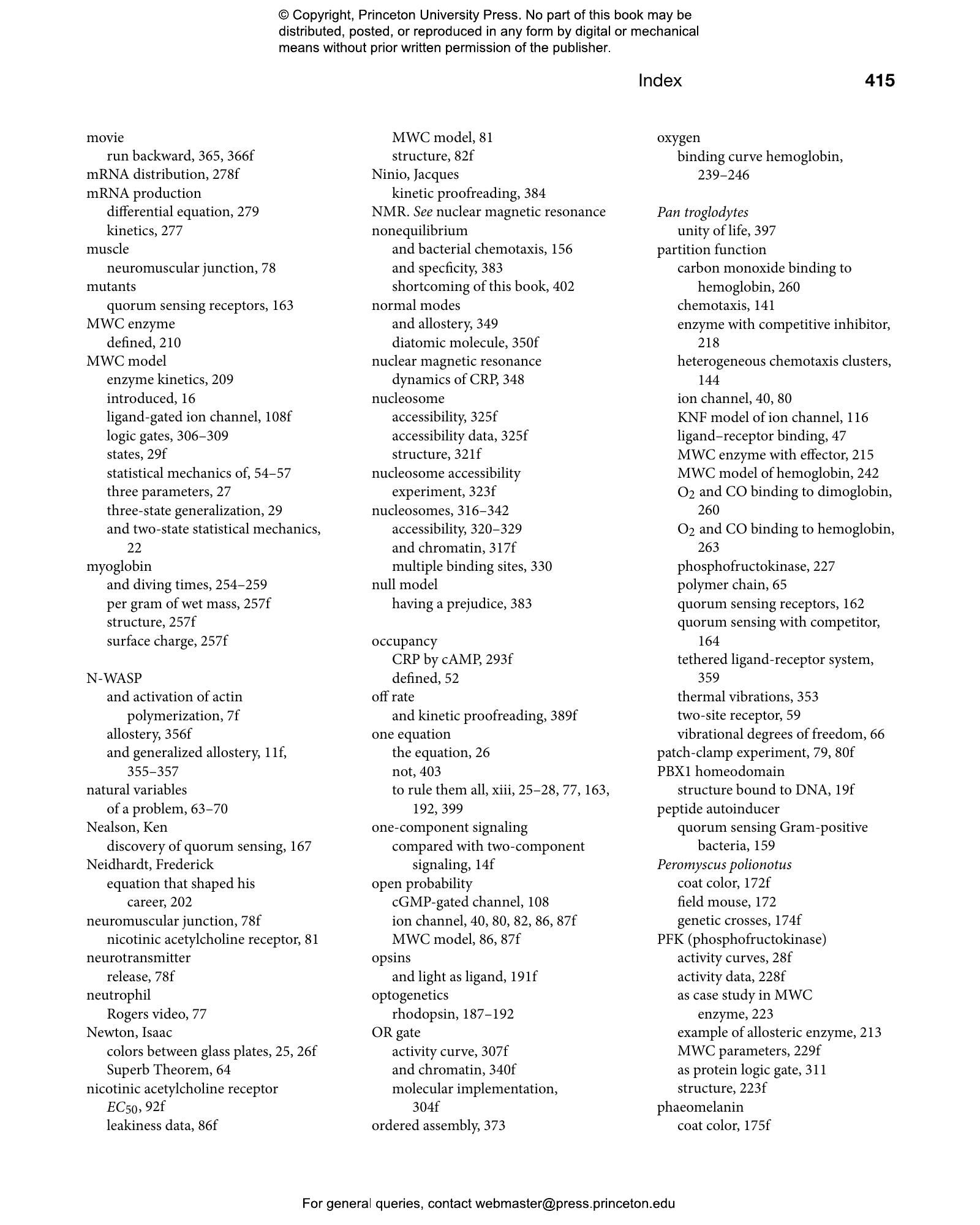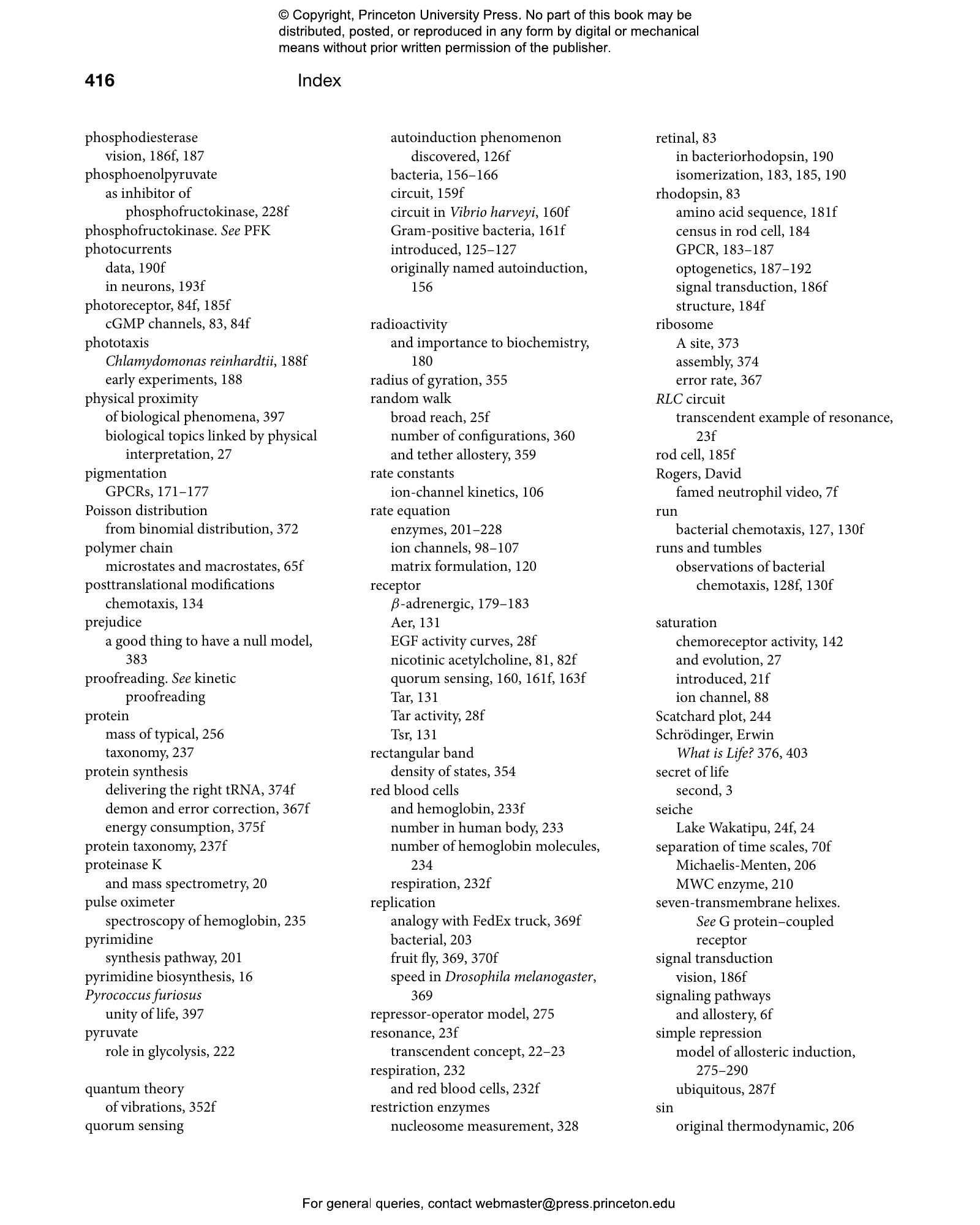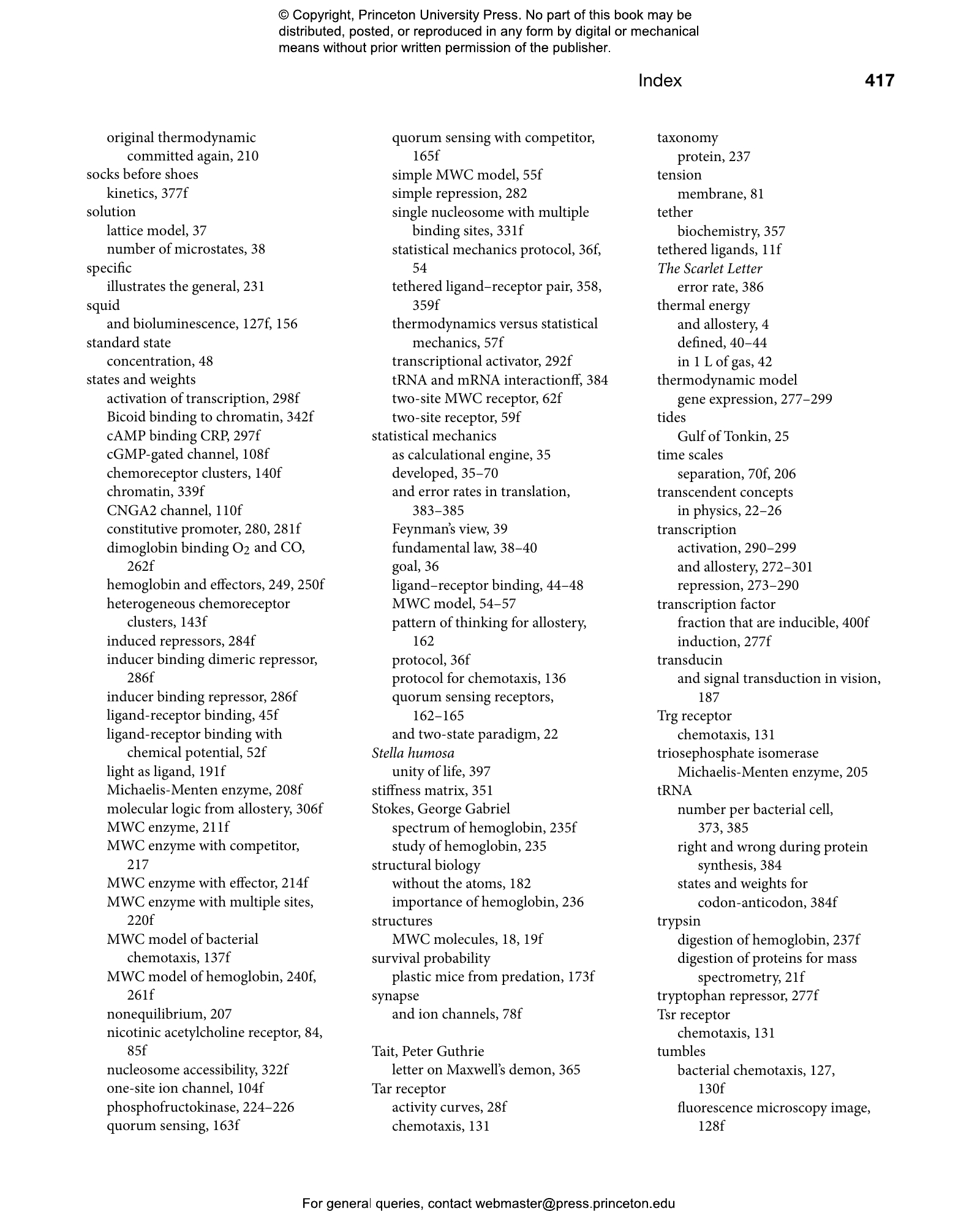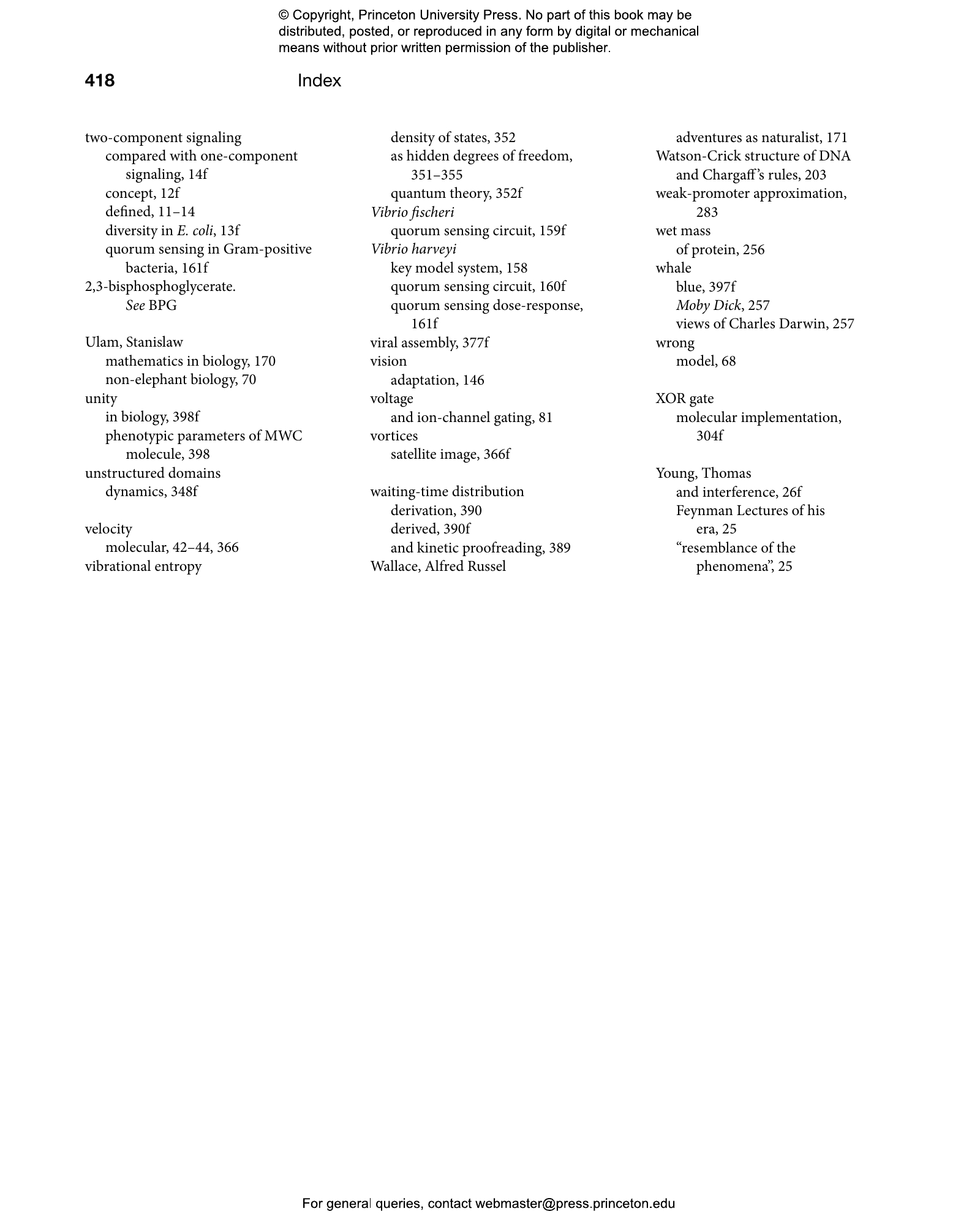A signature feature of living organisms is their ability to carry out purposeful actions by taking stock of the world around them. To that end, cells have an arsenal of signaling molecules linked together in signaling pathways, which switch between inactive and active conformations. The Molecular Switch articulates a biophysical perspective on signaling, showing how allostery—a powerful explanation of how molecules function across all biological domains—can be reformulated using equilibrium statistical mechanics, applied to diverse biological systems exhibiting switching behaviors, and successfully unify seemingly unrelated phenomena.
Rob Phillips weaves together allostery and statistical mechanics via a series of biological vignettes, each of which showcases an important biological question and accompanying physical analysis. Beginning with the study of ligand-gated ion channels and their role in problems ranging from muscle action to vision, Phillips then undertakes increasingly sophisticated case studies, from bacterial chemotaxis and quorum sensing to hemoglobin and its role in mammalian physiology. He looks at G-protein coupled receptors as well as the role of allosteric molecules in gene regulation. Phillips concludes by surveying problems in biological fidelity and offering a speculative chapter on the relationship between allostery and biological Maxwell demons.
Appropriate for graduate students and researchers in biophysics, physics, engineering, biology, and neuroscience, The Molecular Switch presents a unified, quantitative model for describing biological signaling phenomena.
Rob Phillips is the Fred and Nancy Morris Professor of Biophysics and Biology at the California Institute of Technology. He is the author of Crystals, Defects and Microstructures and coauthor of Physical Biology of the Cell and Cell Biology by the Numbers.
"This is a monumental analysis of a basic regulatory mechanism involved in the evolution of life. From the single cell through to cognition, the demonstration of the allosteric model’s universality is fascinating."—Jean-Pierre Changeux, author of The Physiology of Truth
"Allostery is one of the great organizing principles of biology, and Rob Phillips’s contagious enthusiasm for the topic shines from every page of this book. There’s something for everyone here, from the student who wants to see careful derivations to the expert who seeks deep analogies across systems ranging from enzymes to signaling to gene regulation."—Ned Wingreen, Princeton University
"Reading The Molecular Switch, I felt I was engaged in a conversation with the author, who was guiding me through the molecular thickets and showing how physics helps us see the wood for the trees. Rob Phillips conveys with clarity and precision the physicists' deep belief in universality, providing a consistent set of ideas, methods, and examples that are applied across a range of molecular biology. I greatly enjoyed this work."—Jeremy Gunawardena, Harvard Medical School
"The Molecular Switch focuses on allosteric molecules, the fundamental building blocks underlying almost all examples of biological regulation. Rob Phillips thoroughly explores the principles of allostery and expands core concepts to illustrate how molecular switches help to construct complex regulatory behavior. Accessible and probing, this book will be useful and enjoyable to biochemistry and cell biology students as well as experienced researchers."—Wendell Lim, University of California, San Francisco
"With its fluid and witty language, beautiful illustrations, and detailed text, this stimulating book will be extremely important to students of quantitative biology. The fact that a simple mathematical model can describe many different systems with switching behaviors is encouraging, and successful applications of the allosteric model will prompt students to use the same concept to model the systems in their own research. I, for one, learned a lot."—Yuhai Tu, IBM T. J. Watson Research Center



